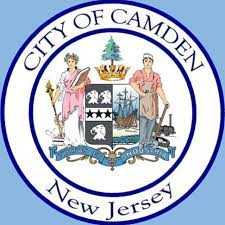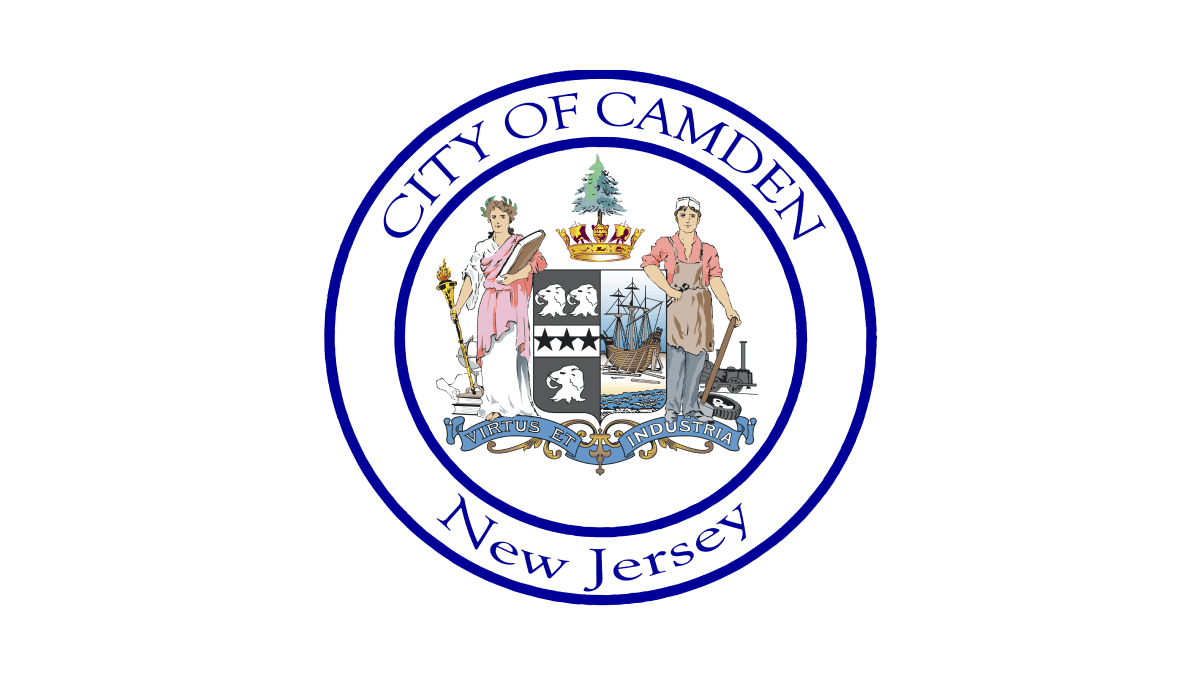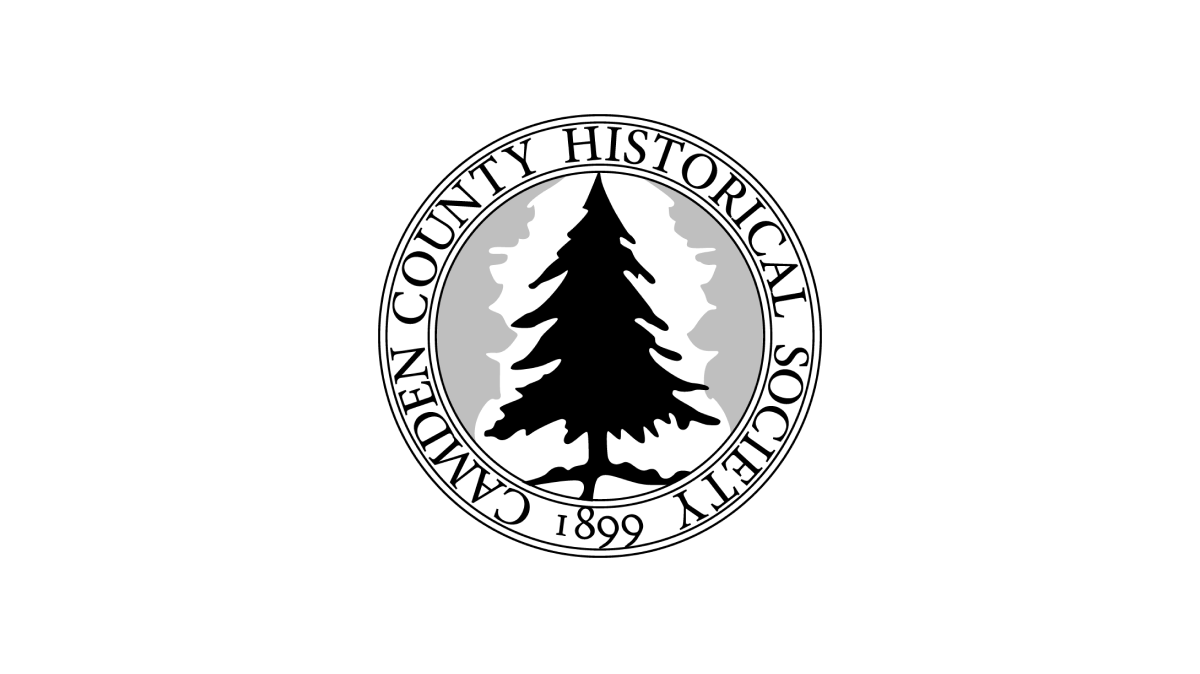Mural
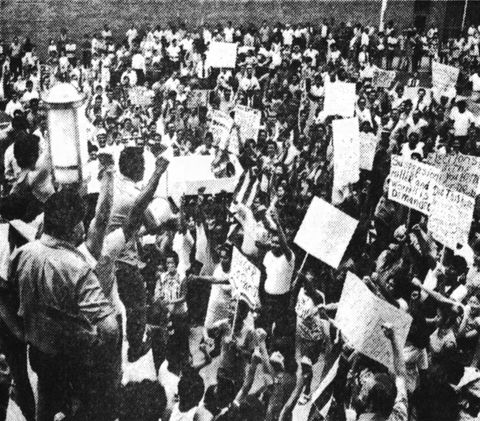
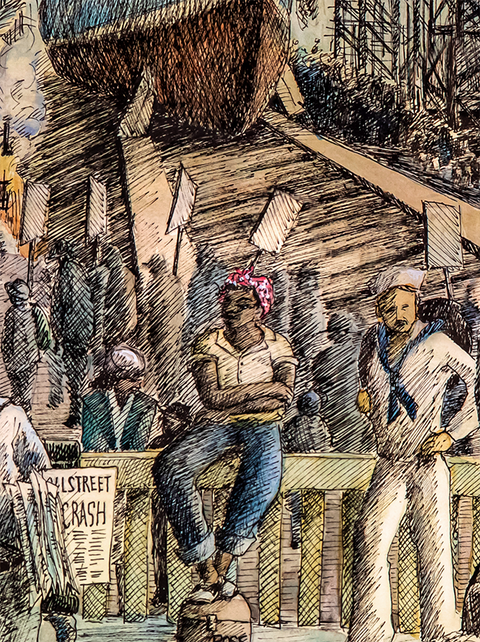
1969 and 1971 Camden Riots
Unrest between the Camden community and the local government in 1969 resulted in a series of skirmishes between crowds and police, culminating on the night of September 2, 1969. A hostile crowd of nearly 300 people in South Camden confronted police about an officer allegedly beating a young black girl. Guns were fired in the crowd, and a white police officer and an African American teenage girl were killed.
Unrest erupted again two years later, on July 31, 1971. Rafael Gonzales, a motorist who was a New Jersey resident of Puerto Rican descent, was beaten to death by two police officers. For four nights, from August 19 to August 22, people committed acts of vandalism and attacked police officers. In return, the police fired tear gas, made arrests, and beat rioters. Hundreds of people were arrested or injured and more than a hundred businesses along Federal Street, Broadway, and Mickle Boulevard in center city Camden were destroyed. Hispanic and Puerto Rican community leaders mediated with Camden officials to bring an end to the riots, recommending the officers be suspended and have charges brought against them. Within hours of this announcement, the crowds dissipated. Both officers were later acquitted by a jury.
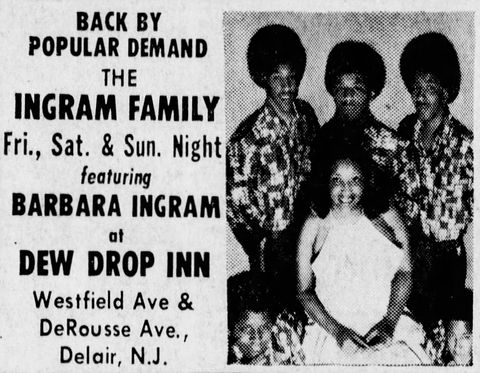
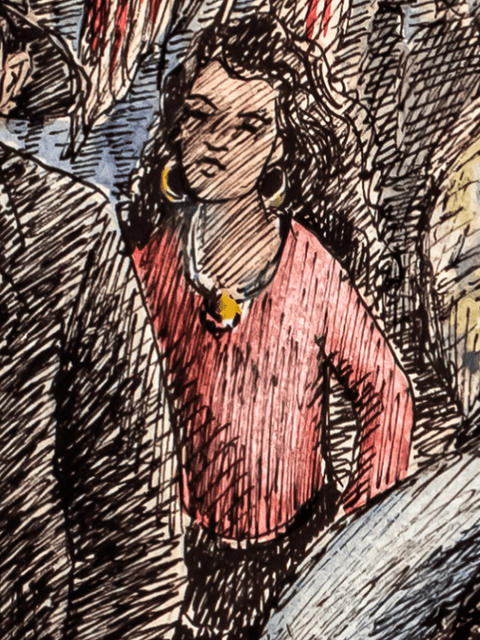
Barbara J. Ingram
(November 25, 1947 – October 20, 1994)
Barbara Jane Ingram was a Grammy Award-nominated musician and Camden High School graduate. Active throughout the 1970s and 1980s, Ingram enjoyed great success as a backup singer with her cousin Carla Benson and her friend Evette Benton at Sigma Sound Studios in Philadelphia. The vocal trio used various names for their band over the years: The Sweethearts of Sigma, The Philadelphia Angels, The Sweeties, and The Sweethearts. Ingram sang in various 20th century genres including R&B, soul, funk, and funk rock with a wide variety of recording artists including Grace Jones, Cat Stevens, The Spinners, Cindy Williams, Phyllis Hyman, Lou Rawls, The Trammps, Stevie Wonder, Marvin Gaye, Luther Vandross, and Sister Sledge.
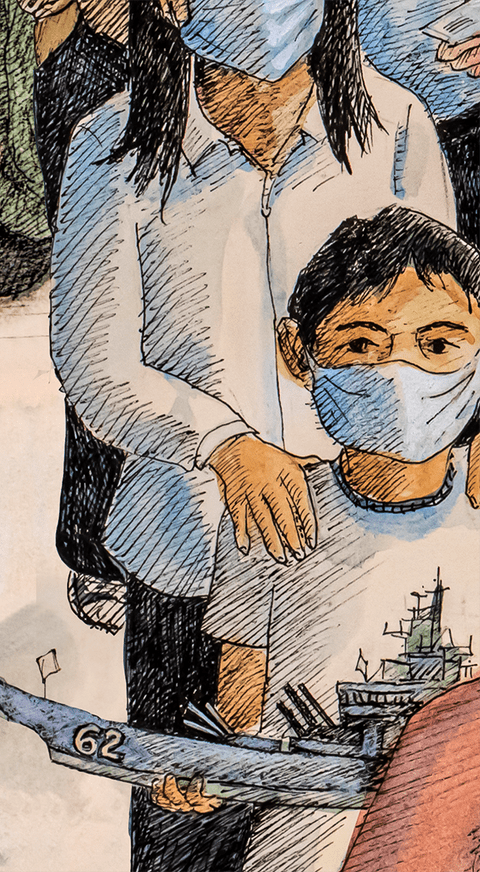
Battleship New Jersey Museum & Memorial
The Battleship New Jersey is docked at the Camden waterfront and is a highly popular visitor attraction. The New Jersey is America’s most decorated battleship and surviving warship. Made at the Philadelphia Naval Shipyard and launched in 1942, the New Jersey saw action in World War II, the Korean War, the Vietnam War, the Lebanese Civil War (1983-84), and was briefly in service in the Persian Gulf (1989-1990). In 1999, the ship was transferred to the Philadelphia Naval Shipyard for restoration work before being donated to the Home Port Alliance of Camden for use as a floating museum.
Since its opening in 2000, visitors to the Battleship New Jersey Museum and Memorial can fully explore the massive ship as they climb ladders, step through passageways, and move in tight spaces as sailors and officers once did. Overnight encampments at the museum are highly popular for groups. Participants sleep in original berths and eat in the mess decks while learning about a sailor’s life on board.
The Battleship New Jersey Museum and Memorial is open for visitors with a seasonal schedule. Check the website (link)for opening times, admission prices, and special programs before your visit.

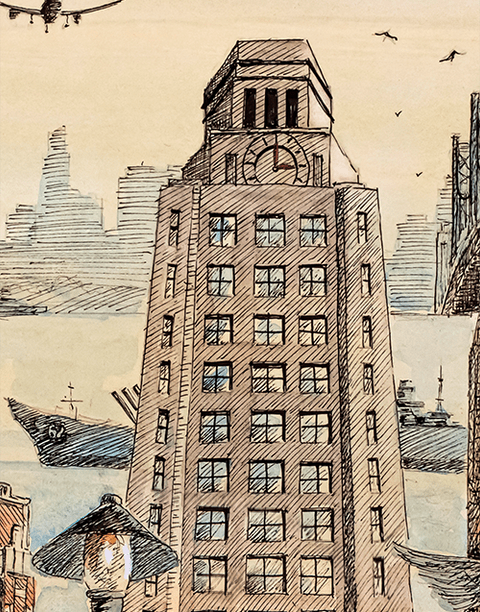
Camden City Hall
Located at 520 Market Street, Camden City Hall is a civic landmark and government hub. The tallest building in the city, it is jointly owned by the City of Camden and Camden County. The structure is built in a restrained Art Deco style and made of light gray granite. It has a six-story high base and a 371-foot tall, 18-floor slender tower at its center. Construction of City Hall Camden began in 1929 and was completed in 1931. It was designed by Camden architects Alfred Green and Byron Edwards. Their firm, Green and Edwards, built other notable New Jersey and Camden buildings, including the Chalcar Apartments at 218-222 Cooper Street in the Cooper Street Historic District and the Cape May County Courthouse and Jail. Today over 300,000 people use this handsome building each year.
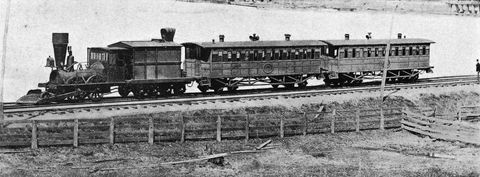
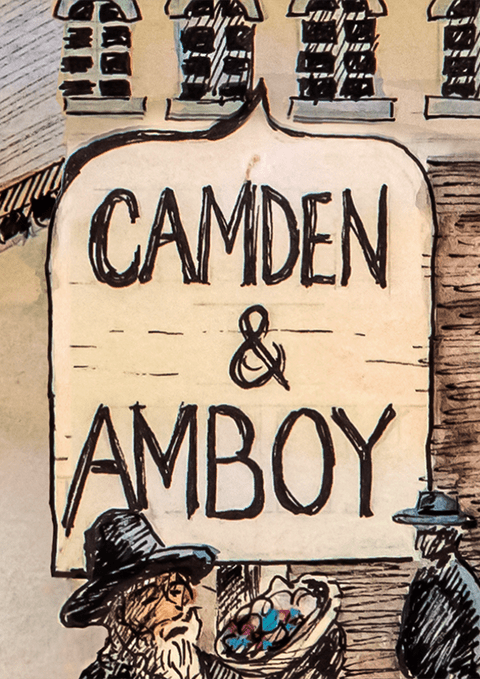
Camden and Amboy Railroad
The New Jersey Legislature chartered the Camden and Amboy Railroad and Transportation Company (C&A) in February 1830. C&A was the first railroad in New Jersey, and only the third in the United States. It provided passenger service between Philadelphia and New York City. The C&A was the first railroad to be conceived primarily as a passenger railroad, and the first to employ steam locomotives to replace horse powered vehicles on rails. In 1831, the C&A first purchased and operated what is now the oldest surviving operable steam locomotive in the world, the John Bull.
The 61-mile Camden and Amboy line was completed in late 1834. Camden was used as the railroad terminal in the winter, when ice on the Delaware River prevented steamboats from moving passengers from Philadelphia to Bordentown to catch the train north to South Amboy. Passengers then took another steamboat into lower Manhattan. Several sections of the original C&A track are still in use today as part of Amtrak’s North East Corridor.

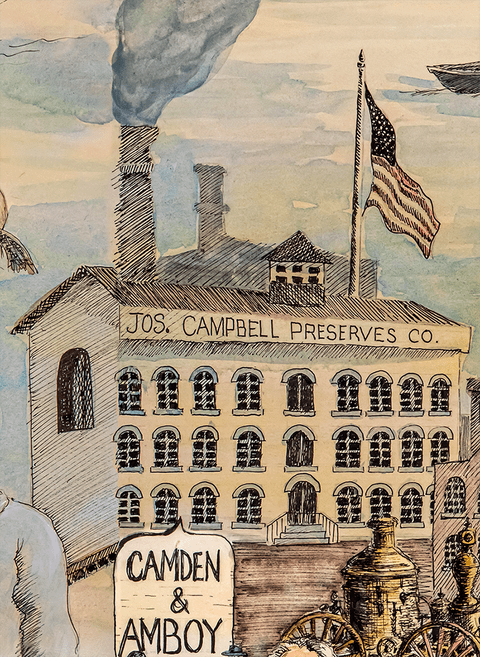
Campbell's Soup Company
The Joseph Campbell Preserve Company was founded in 1868 when fruit merchant Joseph Campbell and icebox manufacturer Abraham Anderson formed a business canning tomato, jellies, condiments, mincemeat, and vegetables. In 1897, Dr. John T. Dorrance, a chemist, invented condensed soup, a process that removed water from canned soup while retaining its nutrients and flavor. The process lowered the cost for packaging, shipping, and storage, thus enabling the familiar red and white Campbell’s can to become commonplace in American kitchens.
In 1904, the Campbell Kids first appeared in a series of trolley car advertisements. Around the same time, the first print advertisement for Campbell’s appeared in a magazine. In the 1930s, Campbell’s began sponsoring radio ads with its now famous “M’m, M’m Good!” jingle. By 1962, the Campbell Soup can had become such an embodiment of American life, that artist Andy Warhol memorialized it in numerous pieces of his artwork. Today, the Campbell’s Soup Company is a multinational food company headquartered in Camden, NJ with sales over $8 billion annually.
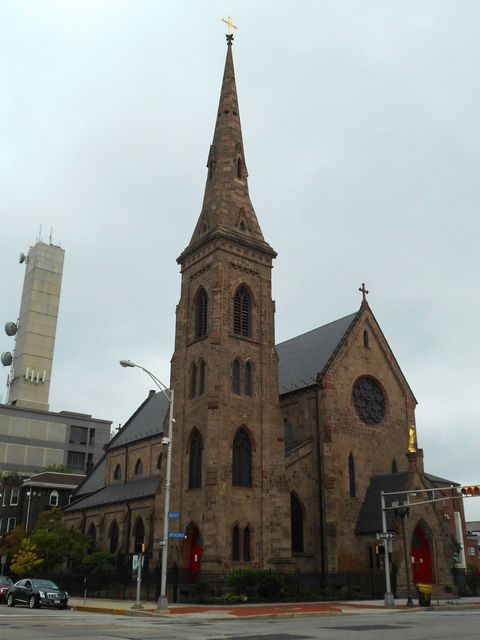
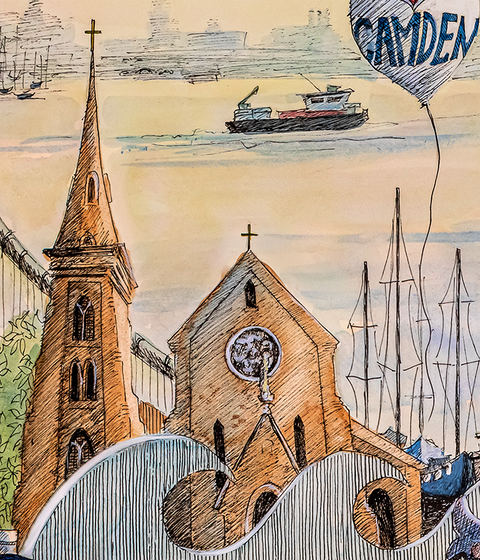
Cathedral of the Immaculate Conception
This handsome and well-maintained Gothic Revival building was built as the Church of the Immaculate Conception. It is the work of Jeremiah O’Rourke, a prominent New Jersey architect who built Roman Catholic churches and several federal post offices while he was U.S. Supervising Architect from 1893-94. Made of Trenton brownstone, the church sanctuary was completed in 1866. By 1869 the church had purchased the remainder of the property on the block bounded by Broadway, Federal, Seventh, and Market Streets. The church tower, sacristy, vestibules, and stained glass were all added by 1886. The Catholic parish grew rapidly, and a rectory, school and convent were completed on the grounds during the same era. In 1937, the church became the cathedral for the new Archdiocese of Camden. This property was listed on the National Register of Historic Places in 2003.
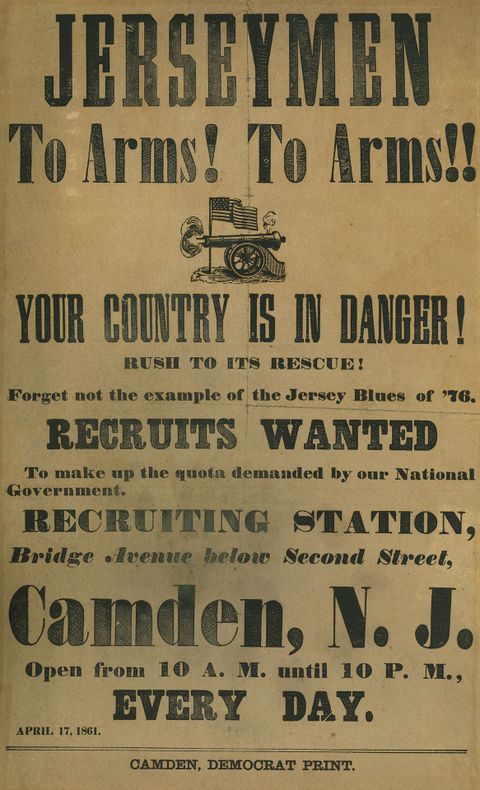
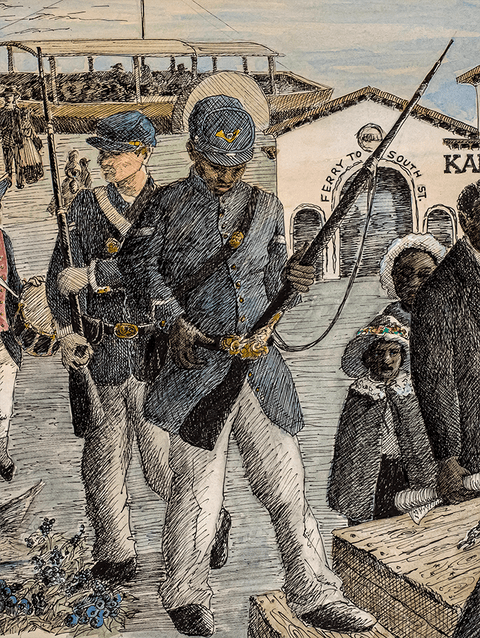
Civil War
The Civil War affected Camden families as it did others in the North, and many mothers sent their sons off to war. A rally early in the war at the County Courthouse drew more than 500 men to enlist in the military. However, once a draft was introduced in 1863, there was less enthusiasm for war service. Each city had quotas to fill for volunteers. Under the call for volunteers made on July 18, 1862, the quota for the City of Camden was 107 men. Other enlistment calls had quotas of up to 425 men from Camden alone. Pacifist Quakers and local upper-class men often paid for substitutes to fill their spots in local draft quotas.
Immediately after President Lincoln signed the Emancipation Proclamation in January 1863, the Federal government authorized the formation of the Union Army's U.S. Colored Troops regiments. In early 1864, the 22nd U.S. Colored Troops Infantry Regiment of New Jersey was sent south into the battle for the military and governmental hub of the Confederacy: Richmond, Virginia. Camden veterans of the Civil War's U.S. Colored Troop units are buried in Butler Cemetery, at Ferry Avenue and Butler Street, which was created for local African Americans who served with the Union Army.

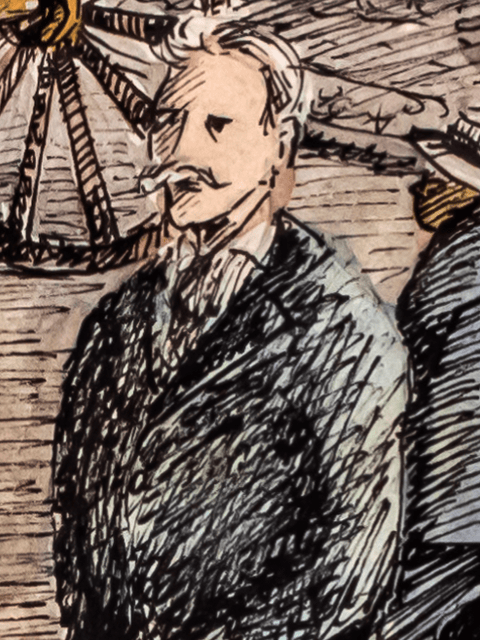
Cooper Browning Hatch
(March 30, 1850 – February 15, 1922)
Cooper Hatch came from an old Camden family steeped in politics. He was a Camden County Freeholder, first elected in 1890, and also served on City Council starting in 1892. Hatch, a Republican, was Mayor of Camden for only one term beginning in 1898. He came to the Mayor’s office with a reform mandate. He sought to enforce the laws that closed taverns on Sundays, seized gambling machines in saloons and cigar stores, and conducted raids on speakeasys.
During his tenure as Mayor, Hatch advocated for capital projects including constructing Camden’s Manual Training High School, paving the city’s first asphalt roads, and improving the municipal water system. After his term as mayor ended, he was elected Sheriff for Camden County and served from 1908-1911. A Camden middle school is named for Hatch. He is buried in a family plot in Evergreen Cemetery.
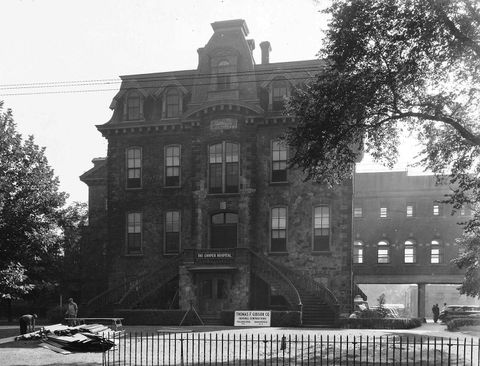
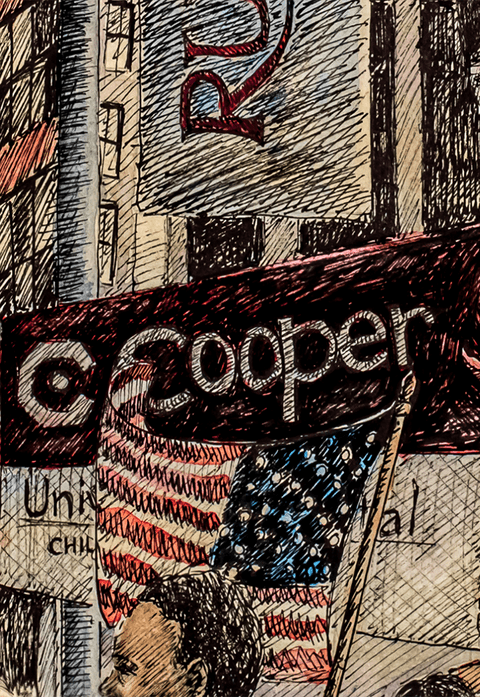
Cooper University Hospital
Cooper Hospital was founded in 1877 to provide medical care for the low-income population of Camden and was a gift from the Cooper family. Doctors began treating patients the same year in the original stone hospital building. By 1890, a nursing school was added to the hospital. Other buildings were constructed to expand care in the 20th century. By 1961, Cooper was the largest hospital in the state.
As the hospital grew, it chose to stay in Camden. Its aging buildings were replaced, and the campus expanded. The old stone hospital was demolished, and the ten story Keleman Building was constructed in its place in 1979. In the 21st century, the hospital partnered with the University of Texas MD Anderson Cancer Center in Houston, TX to create the MD Anderson Cancer Center at Cooper. The hospital also launched the Cooper Medical School of Rowan University and graduated its first medical school class in 2016. Today, the Cooper University Health System is one of the largest employers in the city with more than 7,000 employees. Cooper operates more than 100 community-based outpatient offices and four urgent care centers to serve the health care needs of South Jersey.

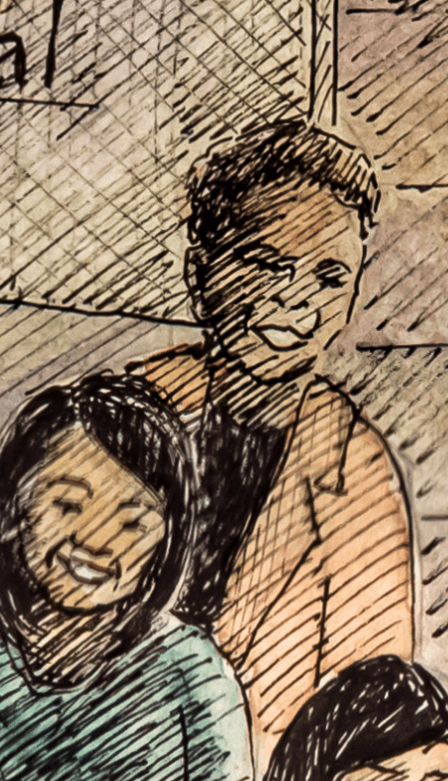
Dana Redd
(Born March 7, 1968)
Dana Redd, Mayor of Camden from 2010 to 2018, grew up in the Morgan Village neighborhood and graduated from Bishop Eustace High School. She went on to graduate from Rutgers Camden and earned a master's degree from Lincoln University.
Before she was elected mayor, Redd was chief of staff to county freeholder Riletta Cream, Finance Manager for the city’s parking authority, and Director of Operations for the Camden County Department of Buildings and Operations. In 2001, Redd was elected to the first of two City Council terms. She was appointed in 2007 to the State Senate to represent Camden’s 5th Legislative District and served there until she was elected mayor in November 2009.
During her first term as mayor, Redd successfully transitioned the city from state to local control. The Great Recession wreaked havoc on the city’s finances, and to balance the budget in 2011, Redd laid off 45% of the police force, 67 firefighters, and 150 other city employees. Redd was able to obtain grant funding that year to rehire 110 police officers and 31 firefighters.
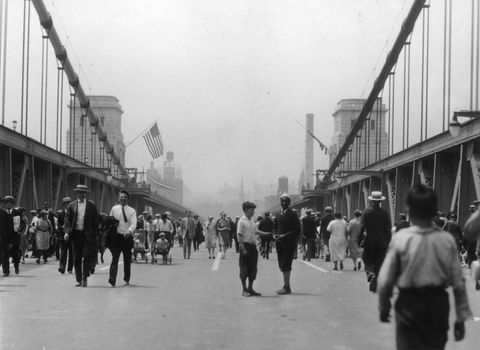

Delaware River Bridge/Benjamin Franklin Bridge
A suspension bridge between Camden and Philadelphia had been a long-sought dream for area civic boosters. World War I’s massive number of commuters to war industry jobs in Camden made the antiquated ferry system a constant struggle for employers and employees alike. As the popularity of private automobiles grew, car ferries between Camden and Philadelphia could not keep up with demand, and lines of cars would back up the streets on both sides of the river waiting to board the ferries.
After World War I ended in 1919, both New Jersey and Pennsylvania formed a joint commission to plan and build the Delaware River Bridge. This handsome bridge was constructed by Ralph Modjeski and designed by Paul Philippe Cret and Leon Moissieff. When the $45 million bridge opened in 1926 after four years of construction, it was the longest single span suspension bridge in the world. The name was changed to the Benjamin Franklin Bridge in 1956.
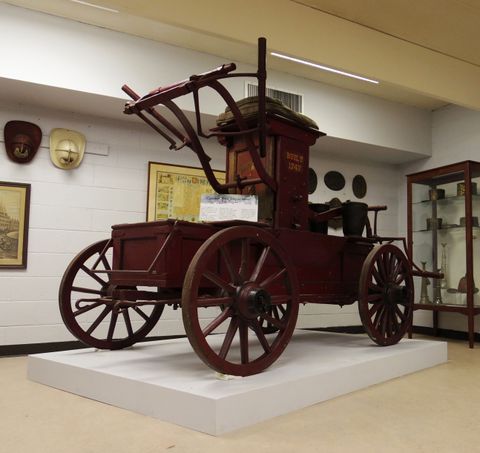
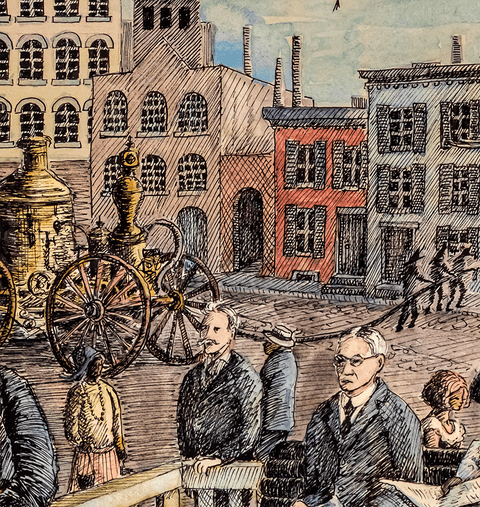
Early Fire Fighters and Fire Engines
The first volunteer fire company in Camden was the Perseverance Fire Company, formed in 1815. These volunteer fire fighters purchased a used “Pat Lyon” hand engine from a Philadelphia fire company. The Pat Lyon fire engine was small and not very powerful. It had to be supplied by a “bucket brigade.” Citizens would line up and hand leather buckets of water toward the site of the fire, then return the empty buckets back down the line to the water source to refill them. The water source could be a well, cistern, or nearby river or creek. By 1855, the city’s fire equipment consisted of four engines and nine hose carriages among the five volunteer companies then in active service.
It was not until 1869 that a paid fire department was created in the city. Camden citizens supported their volunteer fire fighters and opposed the creation of a city department due to the costs involved to create and maintain such a force. Nevertheless, City Council enhanced a municipal ordinance creating a paid fire department on September 2, 1869. Today the Camden Fire Department employs 160 firefighters.
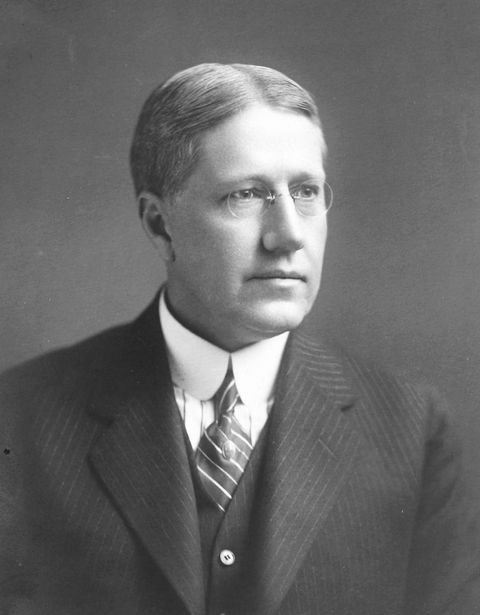
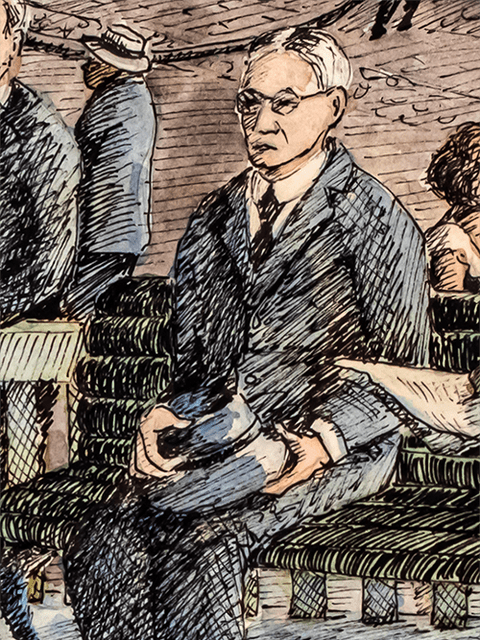
Eldridge R. Johnson
(February 6, 1867 – November 14, 1945)
Eldridge R. Johnson was an engineer who owned a machine shop on North Front Street at the Delaware River in Camden. In 1896, he was approached by Emile Berliner to create a spring-loaded drive mechanism for Berliner’s flat disk record, which played on a hand-cranked gramophone. Johnson’s invention improved Berliner’s gramophone, and Johnson became Berliner's manufacturer. In 1901, they joined as partners and grew the Victor Talking Machine Company into one of the leading producers of disk phonographs and records. The company-expanded to dozens of manufacturing buildings in downtown Camden.
The sale of the Victor Talking Machine Company in 1926 for $37 million made Johnson wealthy beyond measure, and he became a noted philanthropist. He gave Johnson Park to the City of Camden, where he built the Cooper Branch of the Free Public Library. The site was listed on the State and National Register of Historic Places in 1980. Today, the building is used by Rutgers University as the Digital Studies Center and Writing and Design Lab.
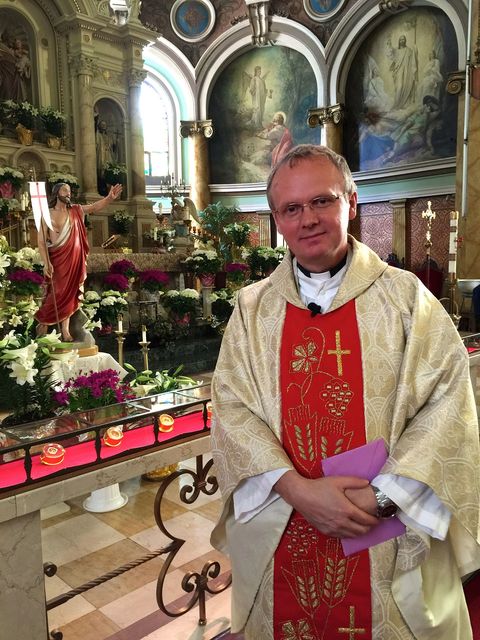
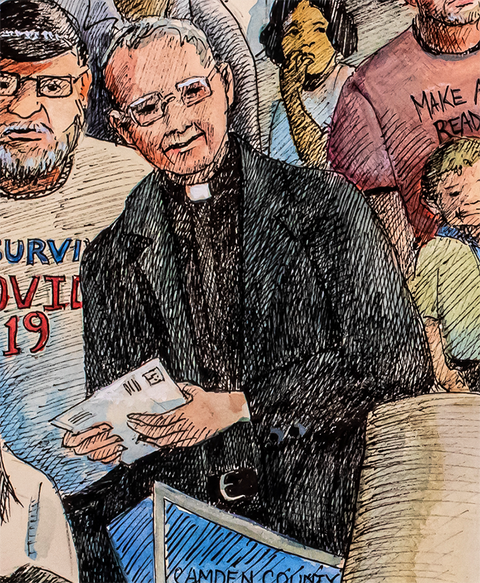
Father Pawel Kryszkiewicz
(Born October 2, 1964)
Father Pawel Kryszkiewicz served as the parochial vicar of St. Joseph’s Polish Roman Catholic Church in South Camden from 2009 to 2016. Ordained at the Cathedral of the Immaculate Conception in Camden in 1993, Father Kryszkiewicz was born in Chodziez, Poland, and immigrated to the United States to work in Michigan before he arrived in Camden in 1990. Father Pawel Kryszkiewicz began his ministry at St. Joseph’s Polish Catholic Church in South Camden in 2009, having served in several other parishes in the Camden archdiocese. Father Kryszkiewicz continued the work of Father Lipinksi, who raised more than $750,000 to match funds provided by the New Jersey Historic Trust to restore the exterior of the church. Father Kryszkiewicz led additional fundraising efforts to restore the interior and the stained-glass windows of this magnificent historic church.
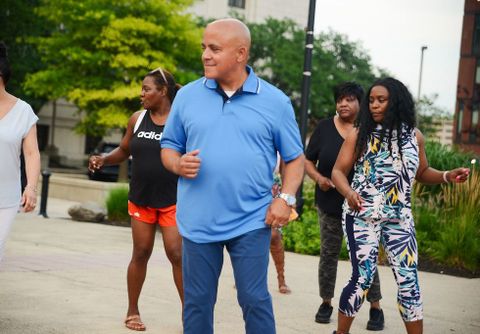
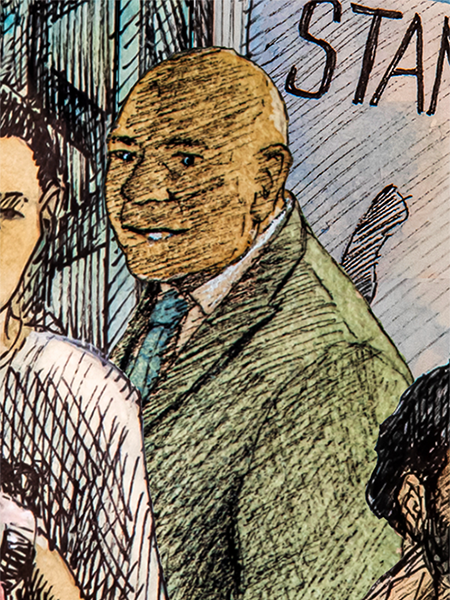
Francisco (Frank) Moran
(Born October 20, 1968)
Francisco “Frank” Moran was Mayor of the City of Camden from 2017-2021. Born and raised in Camden, he graduated from Woodrow Wilson High School. Before he was elected to Camden City Council in 1997, Mr. Moran was the Director of Camden County Public Works and Director of the Camden County Parks Departments. He served for eight years as City Council President during his ten-year tenure before being elected Mayor in 2017. Economic development has been an important focus during Moran’s service to the City of Camden, leading to new Camden headquarters for Subaru, American Water, Liberty Property Trust, and the Philadelphia 76ers.
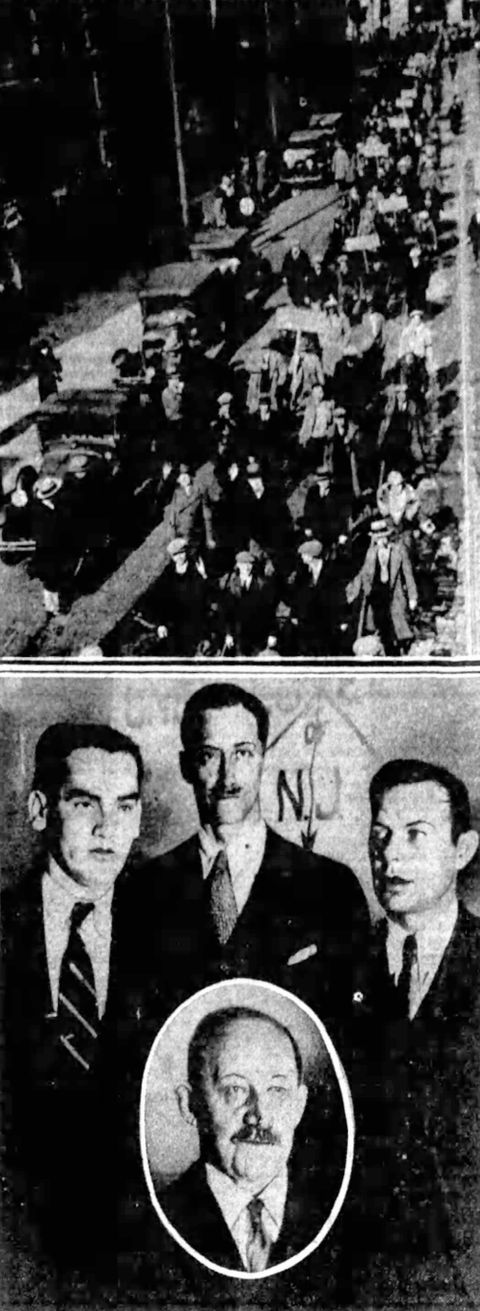
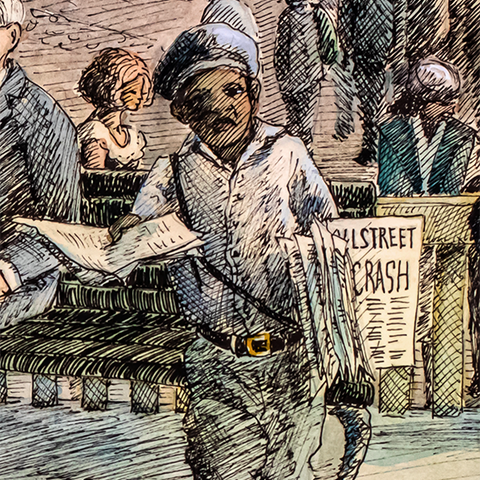
Great Depression
Camden was spared much of the misery of the early years of the Great Depression because it was home to a variety of large companies like RCA Victor, Campbell Soup, New York Shipbuilding, Congoleum, Armstrong Cork, and the Van Sciver Furniture Company, which produced both consumer and industrial goods. As the Depression worsened in May 1932, more than 21,000 city residents applied for relief through the New Jersey Emergency Relief Administration. Local banks began to fail in 1931. By March 1933, the Camden City Commissioner of Revenue and Finance and the County Treasurer announced that city and county employees would be paid in scrip, a substitute for government issued currency.
Camden received a share of federal assistance during the early phase of President Roosevelt’s New Deal. The federal Public Works Administration allocated money for construction of an East Camden waterworks and gave the Delaware River Joint Commission $ 11.9 million to build a rapid transit line across the Delaware River Bridge (later named the Ben Franklin Bridge in 1956). Other New Deal projects included road paving and park improvements to Pyne Point and Farnham Parks.
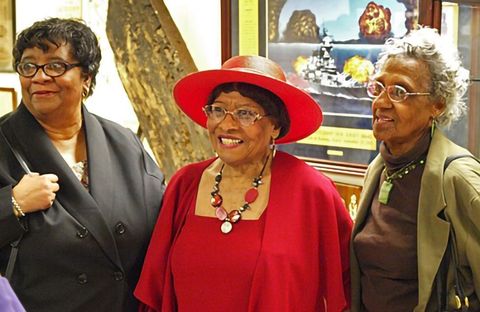
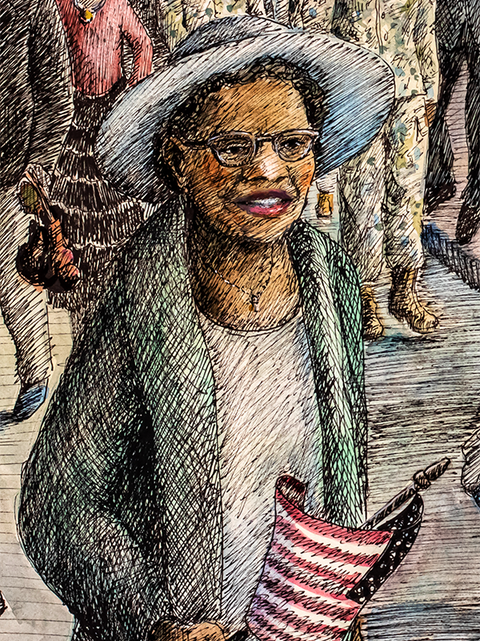
Gwendolyn Faison
(Born February 14, 1925)
Gwendolyn A. Faison is best known as the first woman to serve as Mayor of the City of Camden. Faison began her political life after retiring from a career as a data processing administrator. She was appointed to the Camden County Board of Chosen Freeholders in 1985. Faison served several terms on Camden City Council from 1982 to 1995, and then again from 1997 to 2000 when she was elected Council President. Faison was appointed mayor of Camden in 2000 and was re-elected in 2001 and 2005. During seven of her nine years in office, Mayor Faison had limited authority over personnel, money, daily services, and administrative strategies due to the state takeover of Camden’s finances and the installation of a Chief Operating Officer beginning in 2002. She left office in January 2010 after deciding not to seek a third term. In 2011, Faison received a Joint Legislative Commendation from the State of New Jersey for her years of public service.
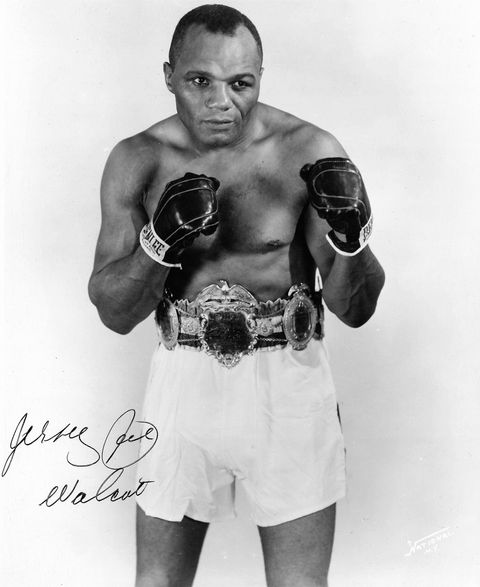
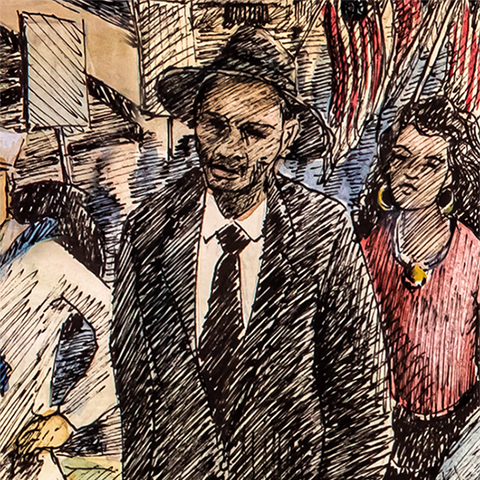
Jersey Joe Walcott (Arnold Cream)
(January 31, 1914 – February 25, 1994)
Arnold Raymond Cream, best known as Jersey Joe Walcott, was a professional boxer. He became the oldest fighter to become the World Heavyweight Champion at the age of 37 in 1951. He retired from the ring two years later. After his boxing career, Walcott worked for the Camden County Corrections Department and became the Director of Community Information for the City of Camden in 1968. Walcott was elected Camden County Sheriff in 1971, becoming the first African American to hold the position.
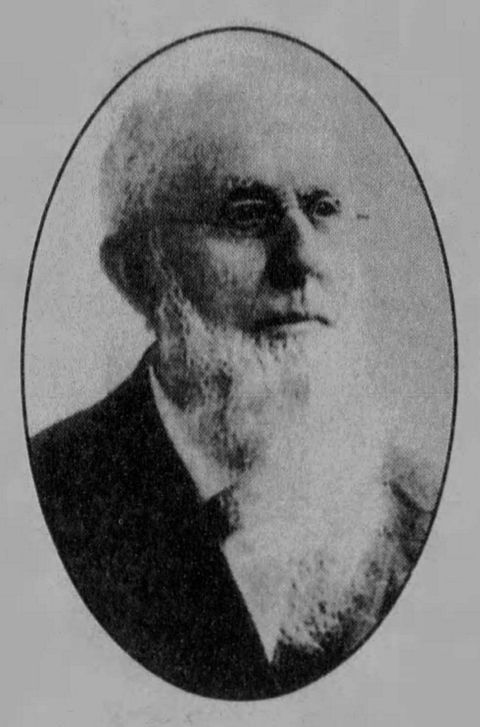
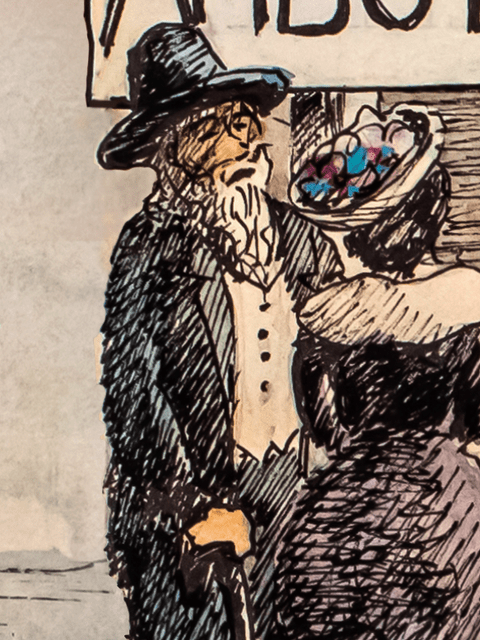
Joseph A. Campbell
(May 15, 1817 – March 27, 1900)
Joseph A. Campbell was a Camden fruit merchant. He partnered with icebox manufacturer Abraham Anderson in 1869 to form Anderson and Campbell, which produced canned tomatoes, condiments, jellies, mincemeat, and vegetables.
A disagreement between the partners over expansion of the firm led to Campbell’s buyout of Anderson in 1876, when Campbell acquired the company’s buildings, equipment, and recipes. In 1891 the company name was changed to the Joseph Campbell Preserve Company and their best seller was Beefsteak Ketchup. Campbell retired from the company in 1894. He died in 1900, the same year that Campbell’s condensed tomato soup was awarded a gold medal at the Paris Exhibition.
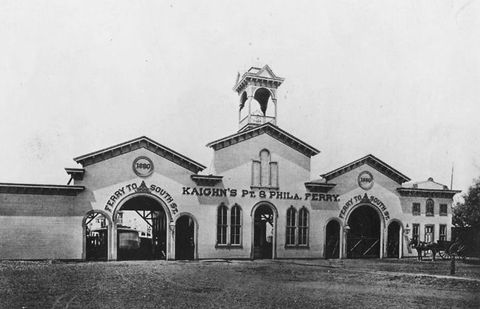

Kaighn's Point Ferry Terminal
This handsome steamboat ferry house was built in 1880, at the foot of Ferry Street which is now Kaighn Avenue at the Delaware River. The ferry went from Kaighn’s Point in Camden to South Philadelphia, with a Philadelphia terminal first on Washington Avenue and then located on South Street. During the 19th Century, this ferry terminal in Camden was part of a complex of buildings with varied uses including a hotel, tavern/saloons and beer garden, other industries and a thriving residential neighborhood along Kaighn Avenue.
On May 29, 1889, the Atlantic City Railway Company, a subsidiary of the Reading Railroad, was authorized to lay tracks to connect with the ferry at Kaighn’s Point to their large railroad network. The ferry terminal here saw much use. After fire completely destroyed the original ferry house in 1914, it was replaced with a temporary structure. In 1924, a new ferry and railroad terminal were completed, just two years before the opening of the new Delaware River Bridge between Camden and Philadelphia. While the ferries were still used for a few years after the bridge opened, they eventually became obsolete and closed.
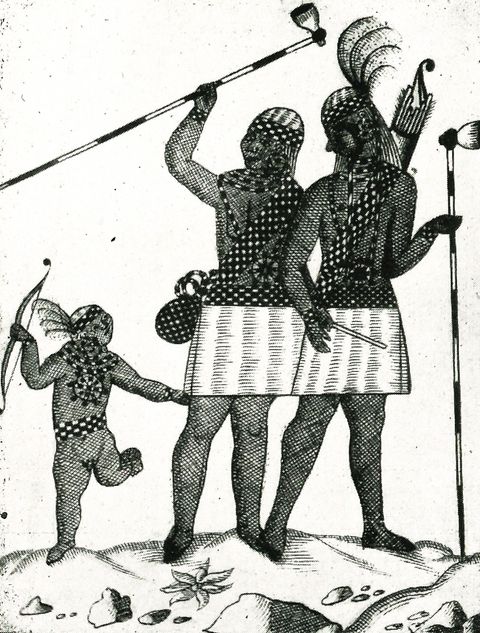
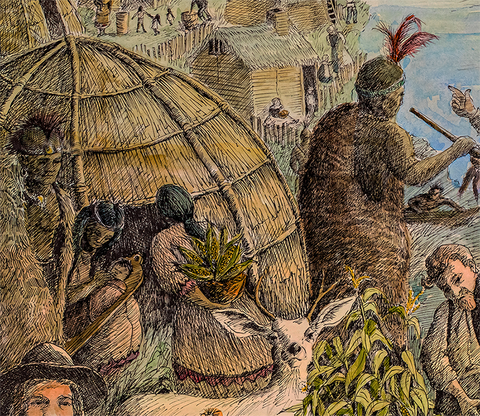
Lenni Lenape Indians
The Lenni Lenape or Delaware Indian culture had been in existence for more than 1,000 years in the Camden County region by the time Europeans began arriving in the 1670s. The European arrivals had peaceful dealings with the Lenape after their land was sold to the early European settlers. The Lenape began to leave New Jersey as they realized that the Europeans’ understanding of land ownership prohibited the Native Americans from using the woods and streams where they once hunted and fished. In less than 50 years after the Europeans first settled in the area, there were very few Lenape in what would become Camden, and only a few hundred remained in all of New Jersey.
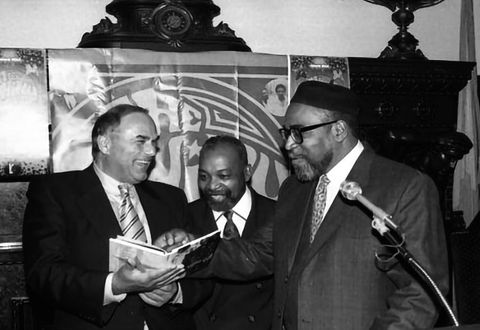
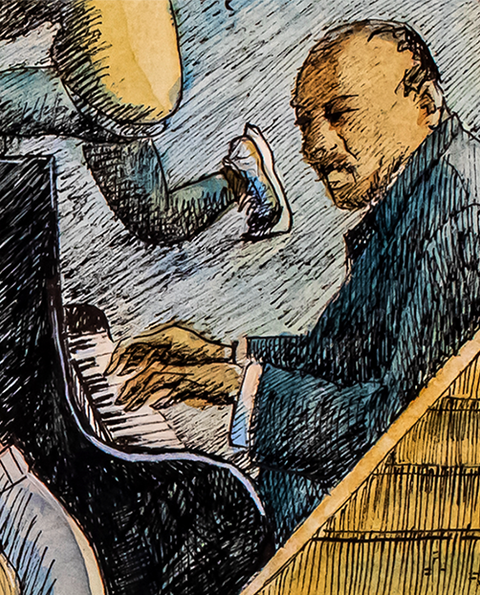
Leon Huff
(Born April 8, 1942)
Camden born, songwriter and record producer Leon Huff, along with his partner Kenneth Gamble, are credited for creating The Philadelphia Sound in the 1970s. With Gamble, Huff produced several number one singles including “Love Train” by the O’Jays, “If You Don’t Know Me By Now” by Harold Melvin and the Blue Notes, and Lew Rawls’ “You’ll Never Find a Love Like Mine.” Gamble and Huff wrote “TSOP�” (The Sound of Philadelphia), which was recorded by MFSB with vocals by The Three Degrees at Sigma Sound Studios in Philadelphia. It became well known as the theme song for the syndicated TV show Soul Train, from 1973 to 1975.
Huff wrote 3000 songs in 35 years, and he produced more than 175 gold or platinum records with Gamble. Gamble and Huff were inducted into the Rock and Roll Hall of Fame in 2008. They won the Ahmet Ertegun Award, honoring songwriters, producers, disc jockeys, record executives, journalists, and other industry professionals who have had a major influence on Rock & Roll.


Lewis Katz
(January 11, 1942 – May 31, 2014)
Lewis Katz was a lawyer, businessman, and philanthropist. He made his fortune as an entrepreneur in parking lots, billboards, and the sports industry. Katz was born and grew up in the Parkside neighborhood of Camden and attended Camden High School. Upon his graduation from Temple University, he became an attorney. He went on to be a founder of the law firm Katz, Etlin, Levine and Weber PA in Cherry Hill. He also served as a County Freeholder for two terms from 1972-76 and was an active fundraiser for Democratic politicians nationwide. From 2000 to 2003 he was a co-owner of the New Jersey Nets basketball franchise and the New Jersey Devils hockey team. As a philanthropist in his hometown, he built a Boys and Girls Club in the Parkside neighborhood and championed many local and regional Jewish causes. Katz supported Temple University’s medical school, which is named the Lewis Katz School of Medicine today.
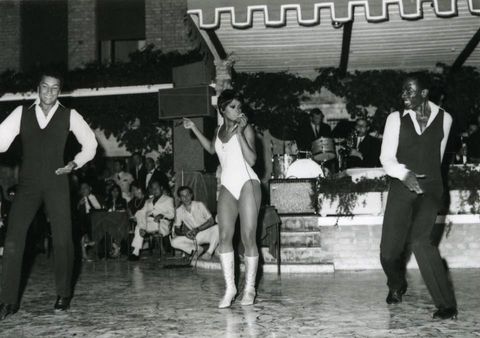
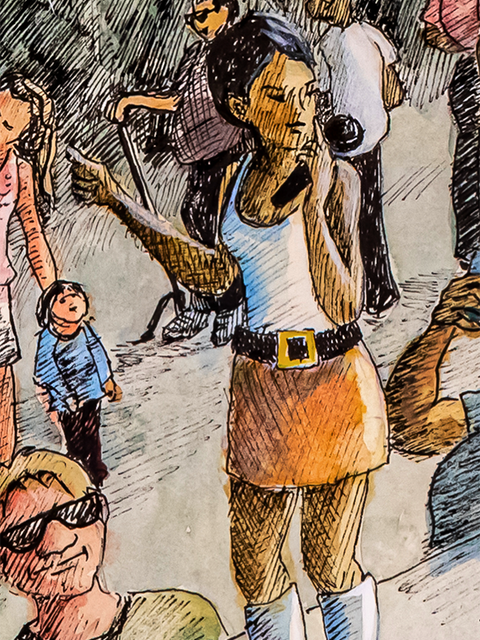
Lola Falana
(Born September 11, 1942)
Lola Falana was the stage name of the singer, dancer, model, and actress who was born Loletha Elayne Falana in Camden in 1942. She began dancing at nightclubs in the 1950s and moved to NYC to begin her show business career. She met Sammy Davis Jr. who asked her to be the lead dancer in his Broadway musical “The Golden Boy" in 1964. She then began modeling and acting on television. Falana starred in films like Cherry Lane and The Liberation of L.B. Jones, which earned her a Golden Globe award nomination in 1971 for New Star of the Year.
Throughout the 1970s, Falana guest-starred on television shows such as The Flip Wilson Show, The Tonight Show with Johnny Carson, Laugh In, and The Muppets. Falana sold out numerous shows at The Sands, The Riviera, and the MGM Grand hotels in Las Vegas in the late 1970s and 1980s.

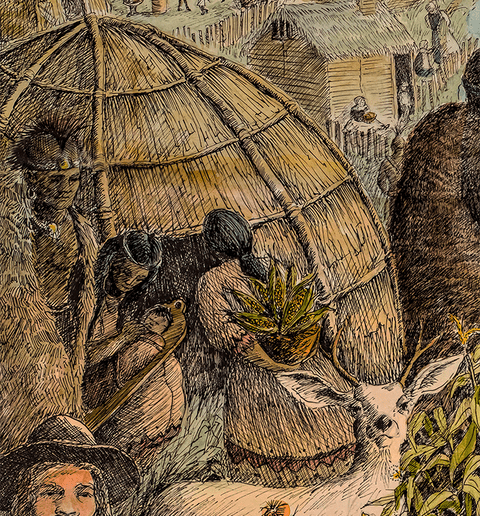
Longhouses or Wigwams
The Lenni Lenape lived in wigwams, or round-ended long houses, that were divided into units for several families. These houses were covered in bark, which was woven through upright poles and layered like shingles to create walls. Roofs were covered with leaves and grasses resting on bent poles, creating an arched shape. Animal hides were used as doors on either end to hold in the warmth from fireplaces located in the center of the dwelling. A hole in the roof over the fireplace allowed smoke to escape.
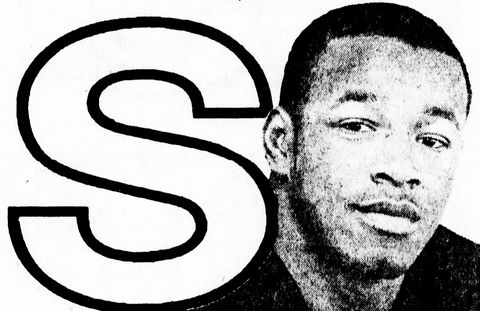
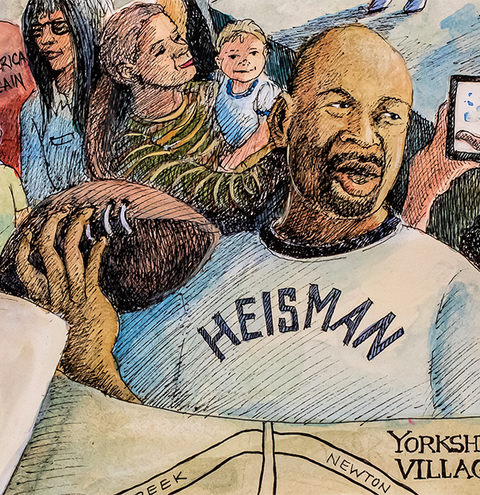
Michael T. Rozier
(Born March 1, 1961)
Michael T. Rozier began his football career at Woodrow Wilson High School in Camden. He was recruited to the University of Nebraska, where he played halfback. In 1983, his senior year, Rozier was awarded the Heisman Trophy. He was inducted into the College Football Hall of Fame in 2008.
After college, Rozier went on to play football professionally. He was first drafted by the Pittsburgh Maulers in 1984, and would later play for the Jacksonville Bills, the Houston Oilers, and the Atlanta Falcons. A foot injury ended his football career in 1992. The football field Rozier played on at Woodrow Wilson High School is named in his honor.
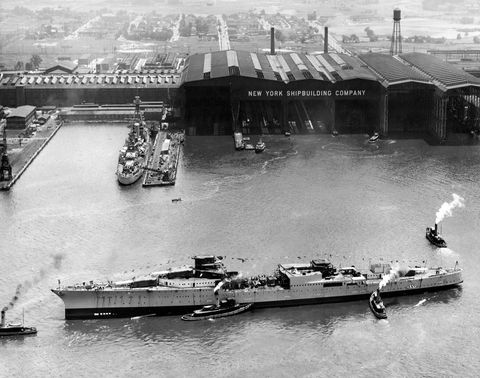
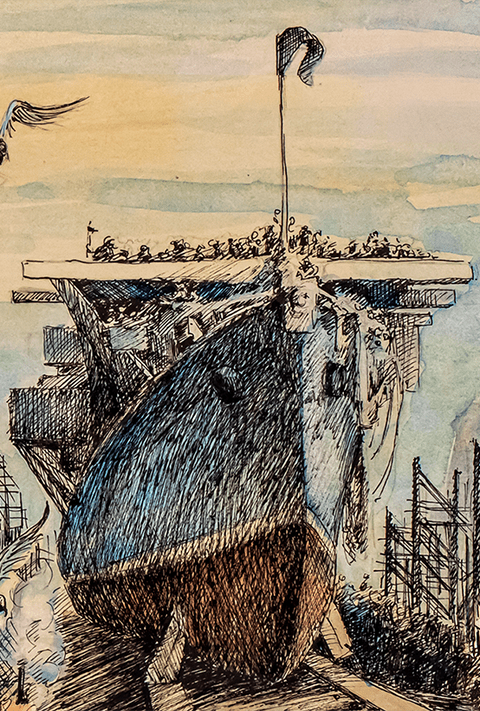
New York Shipbuilding Company of South Camden
Camden’s largest shipbuilding assembly plant was located at the intersection of Newton Creek and Delaware River in South Camden. Sprawling over more than 100 acres, the New York Shipbuilding Company built a series of long brick sheds to house the revolutionary “mold loft template system for fabrication of steel hulls” invented by the yard’s founder, Henry G. Morse. According to sources, “powerful overhead cranes rushed the prefabricated structures to the shipways for final assembly.”
The company signed its first shipbuilding contract in June 1900 at this location. Morse secured 19 other contracts before his death in 1903. The Emergency Fleet Corporation directed an accelerated ship building program during WWI. For the S.S. Tuckahoe, a collier ship designed to haul bulk shipments of coal, the company set a world record for complete fabrication of an ocean-going ship in 28 days. Men worked around the clock to fill orders for warships, merchantmen, tankers, and patrol boats. During WWII, the shipyard employed more than 33,000 men and women. The shipyard, lacking new naval orders, filed for bankruptcy in 1968. The site is part of the Port of Camden today.


Nipper
Artist Francis Barraud’s fox terrier Nipper was the inspiration for the famous painting that became the logo for the Victor Talking Machine Company and its tagline “His Master’s Voice.” Victor manufactured Gramophones and disk records in Camden during the 19th and 20th centuries. Nipper the dog appears on the logo with his head cocked in wonder at hearing his owner’s voice from the Gramophone playing flat disk records. Emile Berliner patented the logo in 1887 after purchasing it from Francis Barraud.
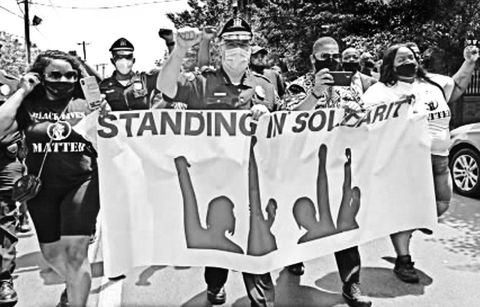

Peaceful Protestors Respond to George Floyd's Murder
While many cities saw armed protests, looting and violence in the days and nights following the death of George Floyd, the Minneapolis Black man who was murdered by white Minneapolis police officers on May 25, 2020, Camden was a remarkable exception. A local Camden resident and business owner, Yolanda Deaver called for protests on social media, and hundreds gathered with her on June 3, 2020. She was joined by local police officers, including Camden County Police Chief Joe Wysocki, who marched side-by-side, carrying signs and calling for change. The event brought national attention to the community policing methods currently employed in Camden which promote de-escalation and dialogue between police and citizens.
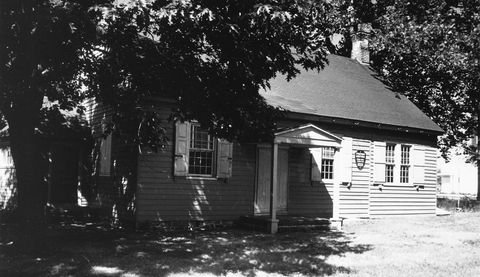
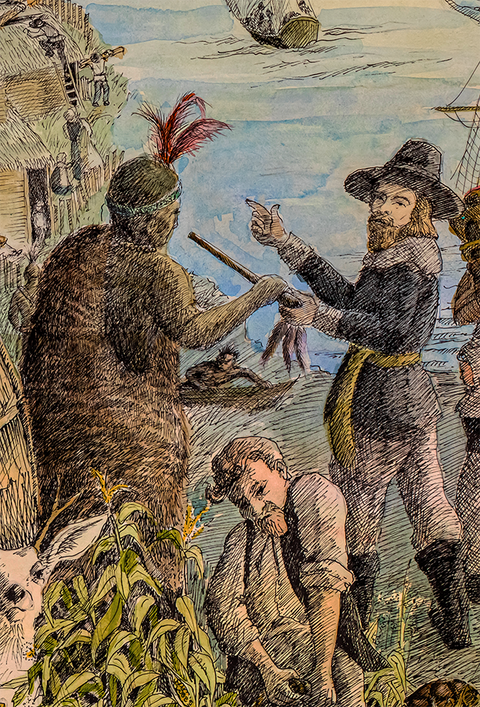
Quakers Meeting the Lenni Lenape
Quakers came and established the Newton Colony in 1682, built their first meetinghouse in 1684, a later meetinghouse built in 1828 is still standing today. When William Cooper arrived in what would later be called Camden in 1682, there were several hundred Lenni Lenape already living here. Unlike in other places, there were no negotiations needed with the Native Americans. A few years earlier in 1677, the West Jersey Proprietors had already secured an Indian deed for all the land between Rancocas and Big Timber Creeks. The purchase price included items of interest to the Lenape: blankets, kettles, needles, pipes, fishhooks, bells, combs, brandy, and guns. The Native Americans and the new settlers lived harmoniously. According to legend, Cooper shared the land and coexisted peacefully with the Lenape. He built a large house, a blacksmith shop, and a stable on his Pyne Point plantation.
The Newtown Friends Meeting at 808 Cooper Street in Camden, NJ is listed on the State and National Registers of Historic Places.
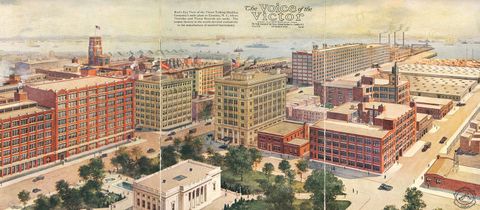
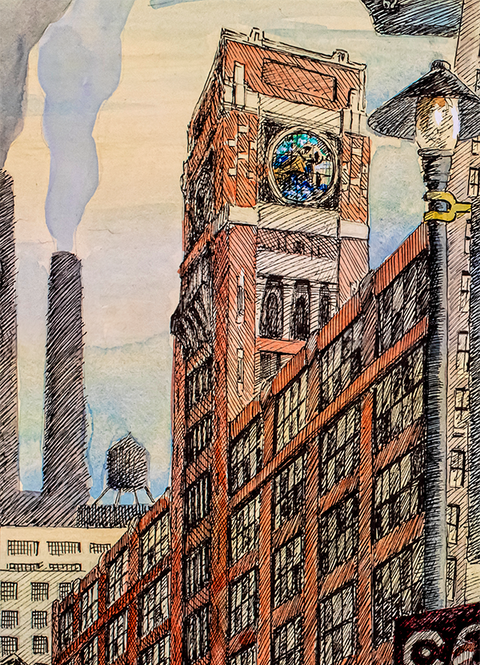
RCA Victor Talking Machine Company
In 1901, Eldridge Johnson incorporated the Victor Talking Machine Company. He purchased Emile Berliner’s Talking Machine Company in 1906 and continued to develop new sound reproduction and assembly line methods. Performers such as Enrico Caruso, the famous opera star, came to the Victor Talking Machine Company recording studios in Camden to cut records. The enterprise grew quickly, and by WWI had over 7,000 employees working in Camden across dozens of buildings. After Johnson sold his company in 1926 and became a philanthropist, the company had 30 buildings in Camden and employed 13,000 workers. New executives from the Radio Corporation of America introduced additional product lines, and the creation of the combined RCA-Victor Company in 1930 gave Camden the designation “Radio Capital of the World.”
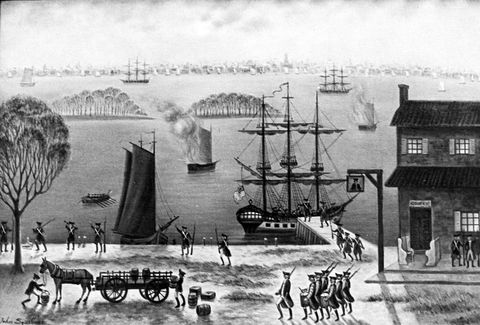
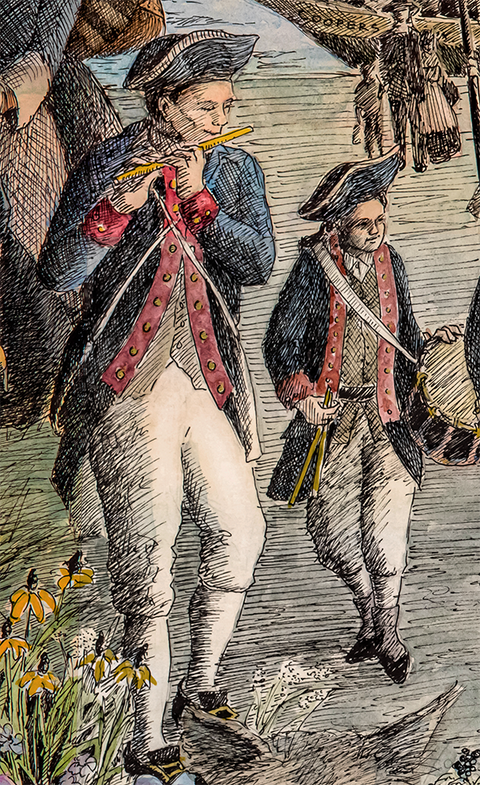
Revolutionary War
There were several skirmishes and raids in the Camden area during the Revolutionary War. Cooper’s Ferry, at the Delaware River, was a critical transportation link between South Jersey and Philadelphia.
Cooper’s Ferry was occupied by British Troops in October 1777, and again several other times the next year. General Washington sent in the First New Jersey Regiment to join Colonial Shreve, a Continental commander, to prevent the Cooper’s Ferry garrison from foraging and collecting needed supplies for British troops. On April 5, 1778, the British Light Infantry overran the Continental troops that were guarding Cooper's Ferry, thus allowing the British infantry to reach Philadelphia.
Civilians suffered from the conflict happening all around them. A cannonball from a British ship smashed into the roof of the Benjamin Cooper Tavern and hit a ceiling beam. Cooper’s barn caught fire while sheltering British troops during a snowstorm on March 2, 1778.

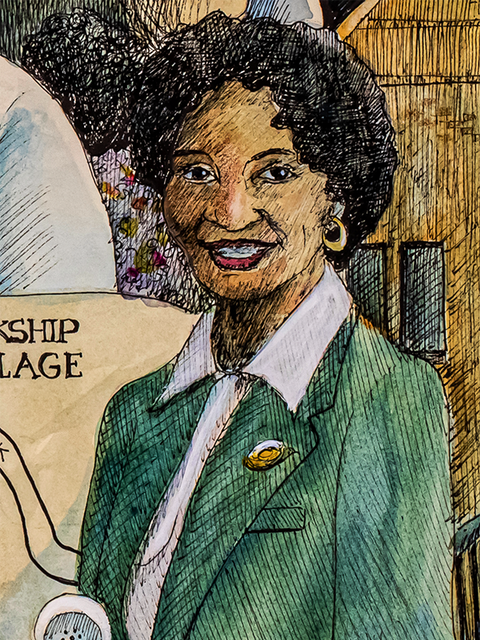
Riletta Cream
(November 13, 1926 – December 18, 2017)
Born in South Camden, Riletta Cream was an educator in the Camden City School District for nearly 40 years. After graduating from Camden High School, she enrolled at Glassboro State College, now Rowan University. In 1948, she became a first-grade teacher at the Whittier School, which was still segregated at the time. In 1972 she returned to Camden High School as its Principal, a position she held until her retirement in 1987. She was appointed to the Camden County Board of Chosen Freeholders in 1994 and was elected for five terms before retiring at age 87. Mrs. Cream was married to another Camden legend, boxing great Jersey Joe Walcott (born Arnold Cream). Today, a city elementary school, a library she helped establish on Ferry Avenue, and the Riletta Twyne Cream Early Childhood Center in Camden are all named in her honor.
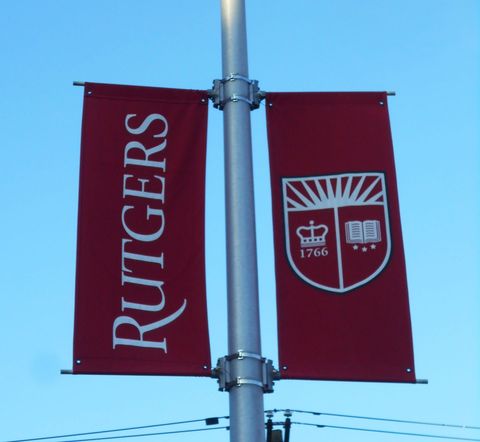
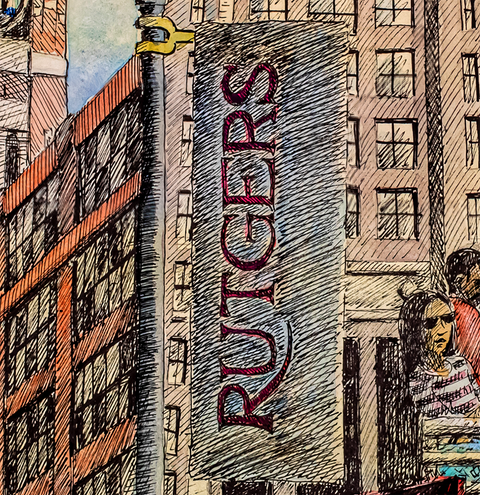
Rutgers Camden
The roots of Rutgers Camden begin in 1926 with the opening of the South Jersey Law School and the College of South Jersey. In 1950, these two schools merged with Rutgers University and became its Camden campus. The university originally offered classes for a comprehensive liberal arts education at the bachelor’s level and added master’s level classes in 1981. A nationally accredited business school and nursing school were also added. Today, 7,200 undergraduate students are enrolled at Rutgers Camden, and 1,355 employees work throughout the sprawling campus.

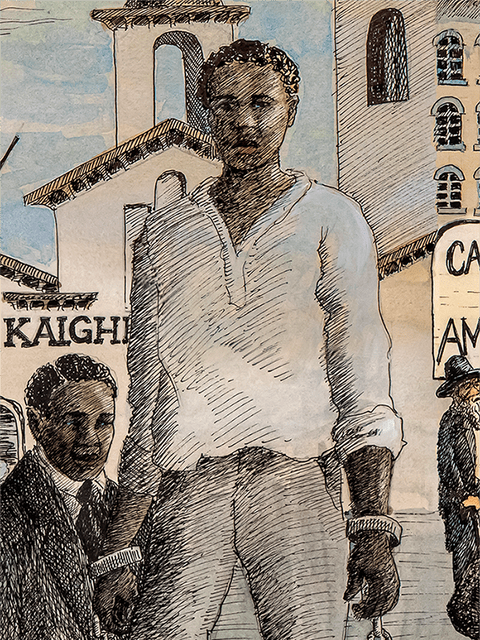
Slave Auctions in 18th Century Camden
The early slave auctions held in Camden occurred at the ferry landings. A newspaper advertisement in the 1727 American Weekly Mercury stated, “To be sold by John Connor, a parcel of Negros Men, Boys and Girls at reasonable Rates, are to be seen at William Coopers on the Jersey and at Joseph Huggs at Gloucester.” Enslaved Africans were sold at three Camden ferry landings until 1761, when New Jersey imposed a stiff tariff on slaves as a means to end importation from Africa and the Caribbean. The last slave auctions were held in Camden in 1766.
Between 2017 and 2020, the Camden County Historical Society placed historic markers at three sites where enslaved Africans were once bought and sold. These markers acknowledge the sales at the ferry landings for the Cooper Street Ferry (marker located at northeast corner of Cooper and Front Streets), the Federal Street Ferry (marker at corner of Federal Street and Jersey Joe Walcott Boulevard) and the Cooper’s Point Ferry (marker at Cooper’s Poynt Park at the Camden Waterfront).
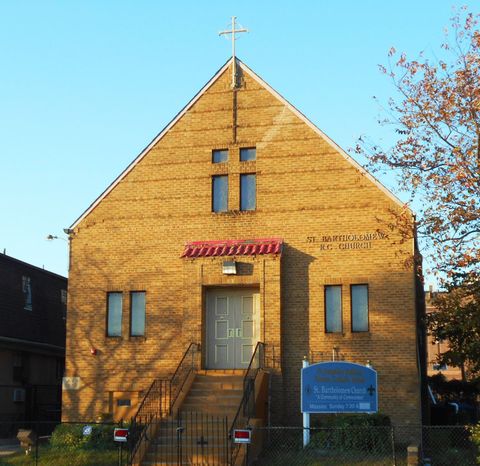
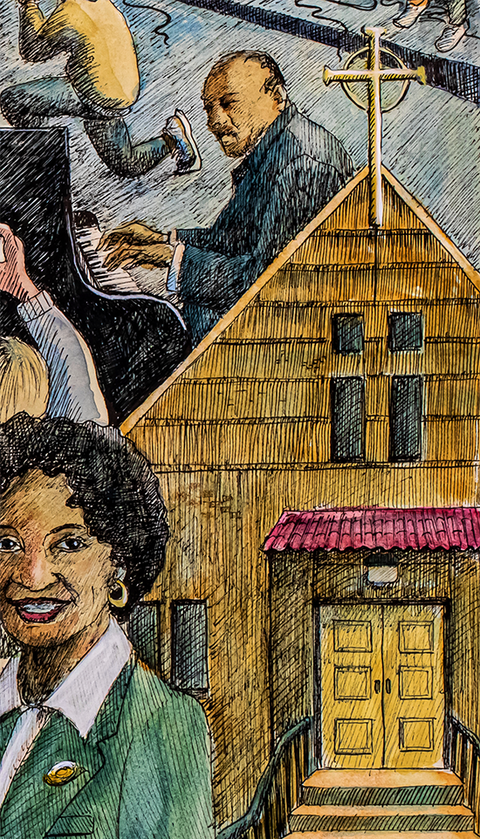
St. Bartholomew's Roman Catholic Church
St. Bartholomew Roman Catholic Church began as a mission of the Cathedral of the Immaculate Conception for the Black community on March 25, 1940 when it created a chapel in the former Masonic Lodge building on Kaighn Avenue. When the parish was founded, there were 17,000 Blacks living in Camden, but only 100 were Roman Catholic. The founding priest, Father Hanley, established a parish school three years later in the upper floors of the Masonic Lodge and enlisted sisters from Blessed Sacrament to teach first through third grade. The parish continued to grow, and by 1947 a new yellow brick chapel was constructed at 751 Kaighn Avenue.
St. Bartholomew’s parish joined with St. Josephine Bakhita and St. Joan of Arc as parish consolidation occurred throughout the 21st century. It is now part of Sacred Heart parish. The Kaighn Avenue church is still used for worship. The parish says about itself that “we are a community of communities celebrating our Catholic identity from the Hispanic, African American, and ’woke’ White American cultural contexts.” St. Bartholomew Church was listed on the National Register of Historic Places in August 2020.
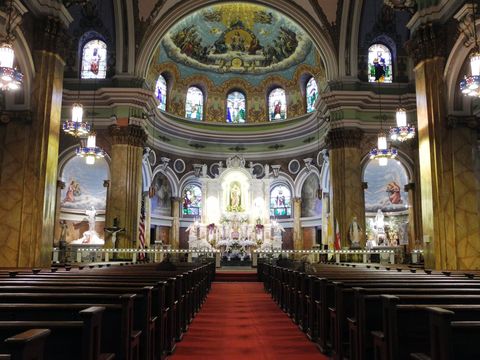
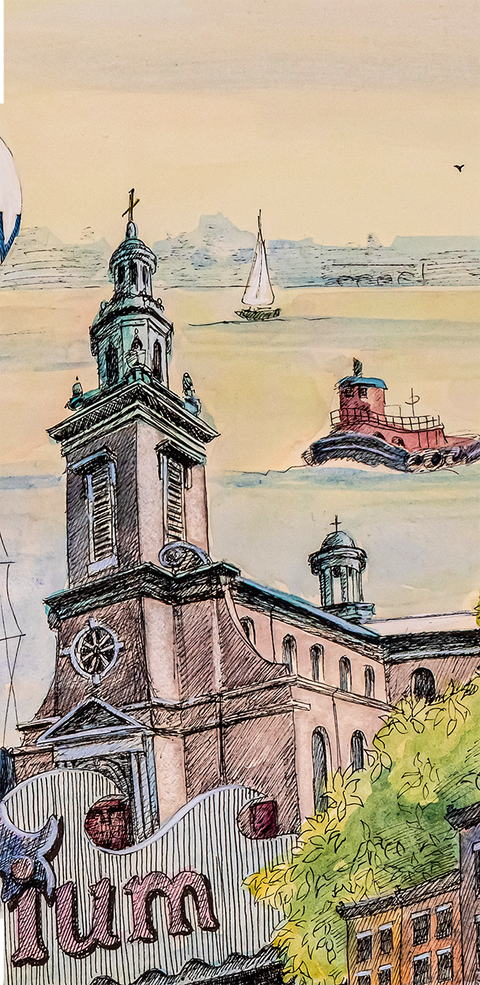
St. Joseph's Polish Catholic Church, School and Rectory
St Joseph’s Church, School and Rectory have anchored the Polish community in the Whitman Park neighborhood since Polish Catholics were first granted permission to set up a parish manned by Polish priests and following Polish customs in the 1870s. It took several decades to accomplish this goal.
The school was built first in 1895 at 10th and Liberty Streets, which housed a church on the second floor and classrooms on the first floor. The school was designed by noted Philadelphia architect Edward Forrest Durang. The parishioners themselves excavated the foundation in order to reduce the cost to $15,000. This building is now used as a Parish Hall.
Further growth in the parish led to the construction of a handsome new church with an especially fine interior, designed by Philadelphia architect George I. Lovatt, Sr. in 1914. Lovatt also designed alterations to the adjacent school to increase the number of classrooms.
A $750,000 fundraising campaign began in 2003 to restore the exterior and interior of the church. The church is open for tours on the second Saturday of each month November through May. Be sure to visit the “Szopka,” the automated Nativity Scene, permanently installed in the School building.
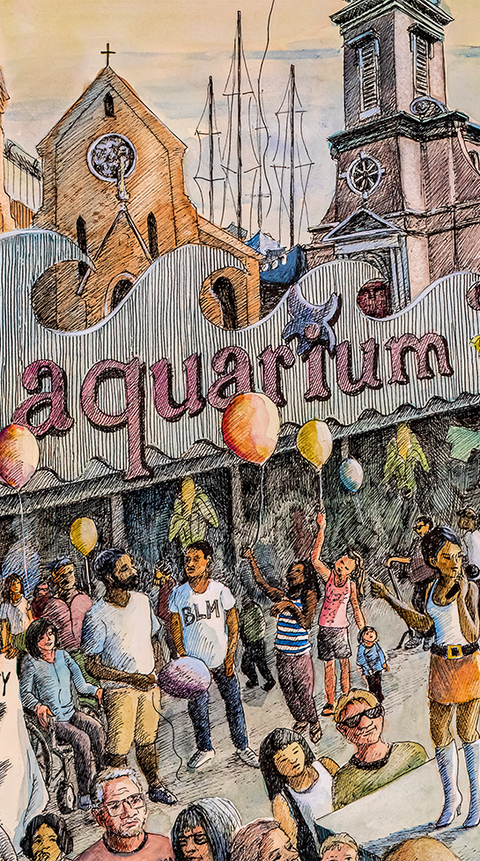
The Center for Aquatic Sciences at the Adventure Aquarium
The mission of the Center for Aquatic Sciences is “education and youth development through promoting the understanding, appreciation, and protection of aquatic life and habitats.” The Center’s educational programming aims to foster a personal connection to aquatic life and water resources, highlighting the importance of conservation. The Center serves families in Camden through informal science education programs like community kayak trips on the Delaware and Cooper Rivers, the Virtually Camden web portal, and the CAUSE (Community and Urban Science Education) youth development program. The Center also provides students in the tri-state area with both in-person and virtual outreach programming on topics ranging from animal habitats to marine science careers. This programming includes year-round teen science experiences, summer camps, and afterschool clubs. The Center, in partnership with Adventure Aquarium, provides on-site classes, tours, and a robust volunteer program to serve the 900,000 annual Adventure Aquarium visitors.
To explore more about educational programs at the Center or to learn more about the Adventure Aquarium, open hours for visitors, admissions, reservations, and special exhibits, visit the website.
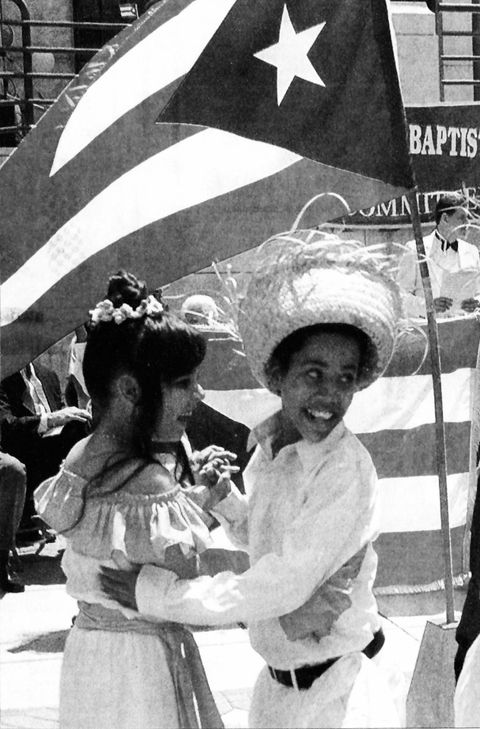
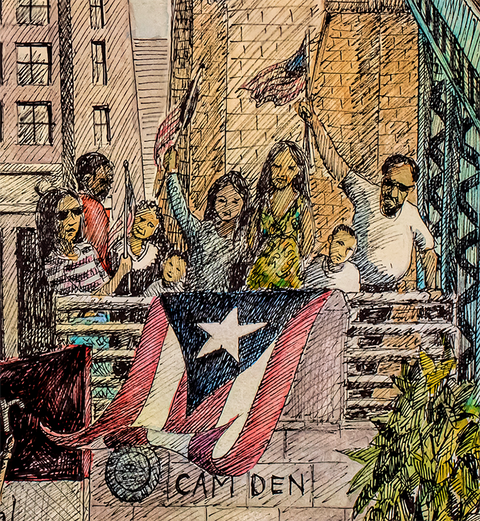
The Parada San Juan Bautista
A Camden tradition for more than 60 years, the Parada San Juan Bautista is a family-oriented cultural event for Puerto Ricans and others in the community. The parade, which is held in late June to celebrate Saint John the Baptist’s birthday, features marching bands and competitive prizes for colorful floats. The nonprofit organization Parada San Juan Bautista, Inc. manages the parade and an associated long-standing scholarship fund. Sponsorships are collected each year to provide four competitive scholarships for Puerto Rican high school graduates. Over $400,000 has been awarded from the scholarship fund in the last 35 years.
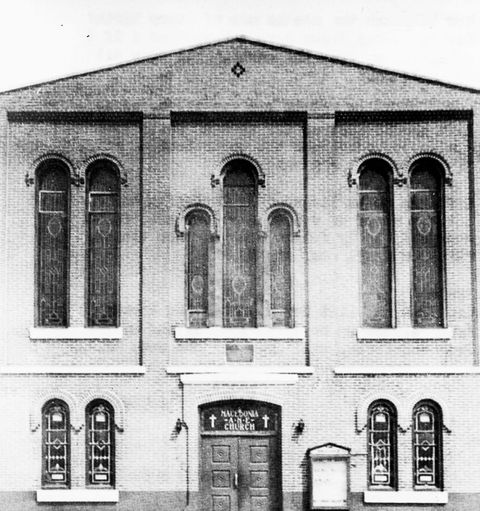
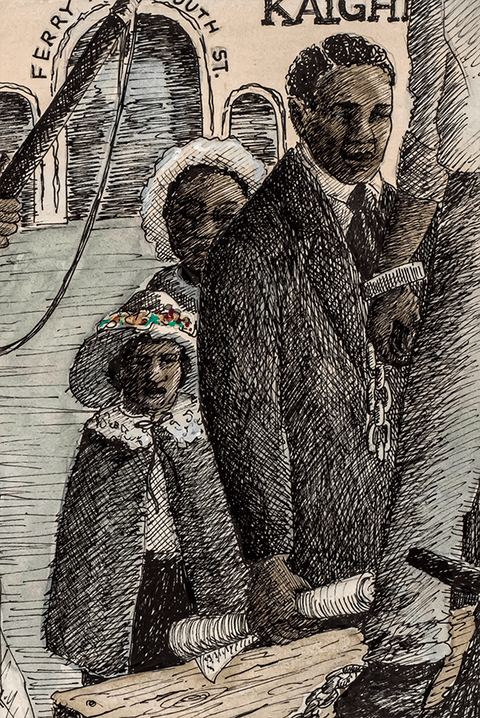
Underground Railroad
The Underground Railroad operated throughout South Jersey and in Camden, and the Macedonia African Methodist Episcopal Church, its members and pastors were critical Underground Railroad operatives, sheltering enslaved people in their journey north to freedom.
Around 1835, soon after completion of the first Macedonia AME Church at Third and Spruce Streets in Fettersville, slave catchers and officers of the law arrived during the night at the home of a black man named John Collins. Collins lived across the street from the church. Women members, armed with clubs and pokers, drove the would-be captors away and freed Mr. Collins.
Church members passed down stories of fugitive slaves given sanctuary within the church building itself during the antebellum period, led there by church members. Several pastors associated with the church were also Underground Railroad operatives, especially Rev. Thomas Clement Oliver, who was pastor from 1847-1848. While some freedom-seekers continued north, others remained to settle in free black Camden communities such as Fettersville.
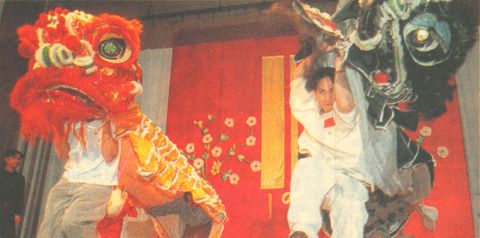

Vietnamese in Camden
The US Census Bureau lists Camden’s 2019 population as 76,000 residents. This includes 2.6% of the population that identifies as Asian American including Indian, Chinese, Vietnamese, Pakistani, Korean, or Japanese. Many Vietnamese and Cambodian refugees came to Camden after the Vietnam War because of readily available housing. Resettlement agencies found housing where gentrification and job losses had pushed lower income residents elsewhere. East Camden became a hub where many working-class Cambodians and Vietnamese found homes, and these neighborhoods still remain strongholds of Asian Americans in Camden today.
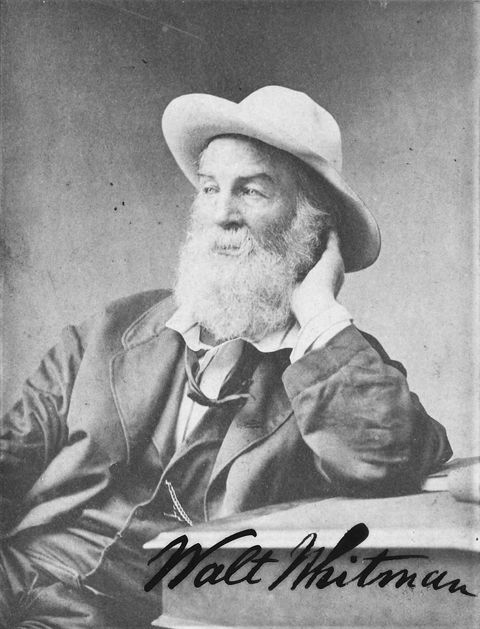
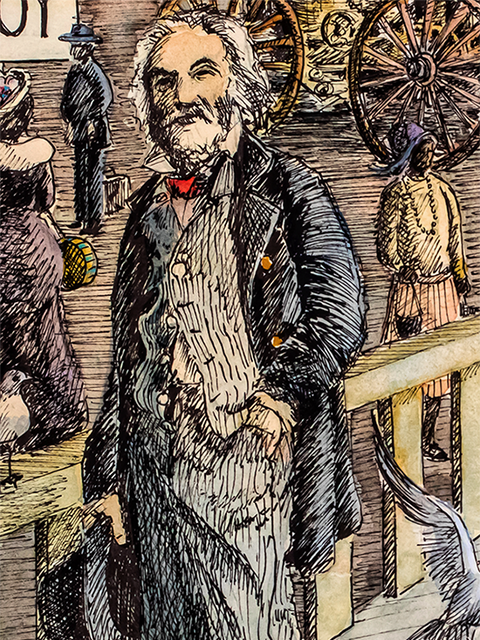
Walt Whitman
(May 31, 1819 – March 26, 1892)
Considered one of America’s most important poets, Walt Whitman created something new and profound: an American poetry distinct to this new nation. In 1855, he self-published a 95-page collection of poems called Leaves of Grass. The book is now a landmark in American literature, although at the time of its publication it was considered highly controversial. Whitman continued to add to the volume until its ninth edition, published just months before he died in 1892.
Whitman moved to Camden after suffering from a stroke in 1873 to live with his brother at 431 Stevens Street. Whitman eventually bought his own home, a small two-story frame house at 328 Mickle Street (now 330 Dr. Martin Luther King Jr. Boulevard) in 1884. He was bedridden for the entire time he lived at Mickle Street. Mary Oakes Davis, a neighbor, took care of him until his death in 1892.
He is buried in a remarkable tomb that he commissioned in Harleigh Cemetery. Whitman’s house, a National Historic Landmark, is owned by the State of New Jersey and is open for visitors. See the website for opening times, admission costs and special events (link).
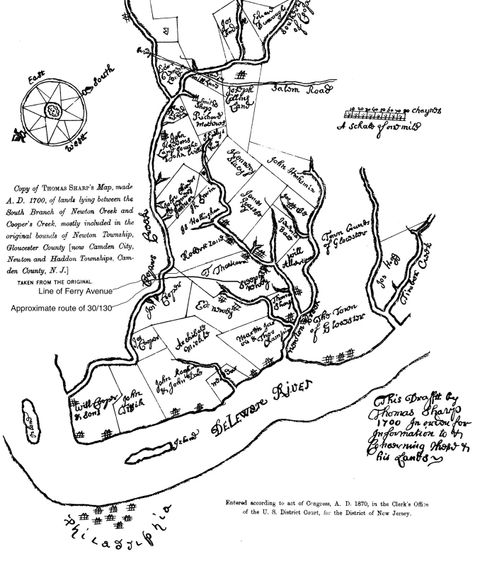
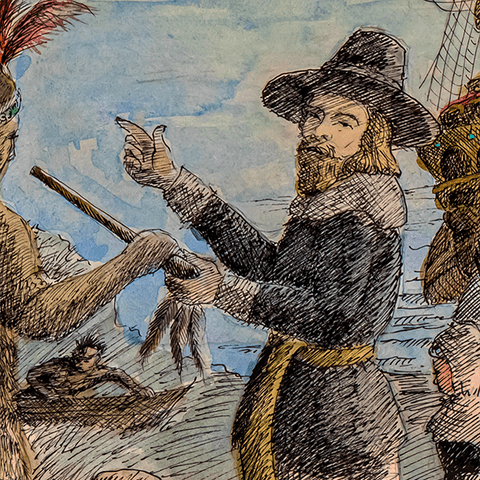
William Cooper
(1632 – 1710)
William Cooper was one of the earliest permanent European settlers in Camden City. Cooper and his family immigrated to the Colonies from England. As a Quaker, he sought relief from religious persecution as well as economic opportunity. Cooper first settled in what was then Gloucester County in 1682 with his wife Margaret and their four children. Later, he purchased 300 acres of land where the Cooper River enters the Delaware River. He built his estate there and named it Pyne Point.
Cooper was a blacksmith. Later, as he acquired additional parcels of land, he considered himself a yeoman or farmer. At Pyne Point, he built a large house with a blacksmith shop and a stable. His son, Daniel Cooper, began the earliest ferry operations to Philadelphia in 1695 on the family’s lands at the foot of present-day Cooper Street.
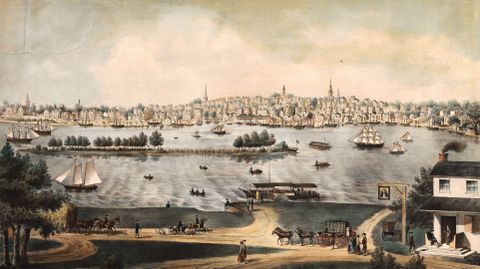
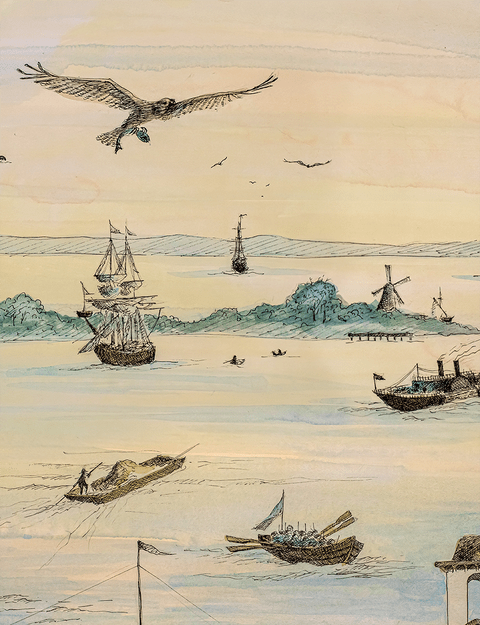
Windmill and Smith Islands
Windmill and Smith Islands were once one long, thin island located in the middle of the Delaware River. As soon as ferry service began in the 17th century, the island proved to be a barrier to the movement of people and commerce between Philadelphia and Camden. During the early 19th century, the island was built up as a recreational site with manicured gardens and swimming beaches. In 1836, J. W. Mickle bought a portion of the island in order to cut a canal through it to make ferry passage easier. By then, the top section of the island was called Windmill Island, and the lower part was named Smith Island. Because ferry size increased significantly by the later 19th century, the canal was only usable during high tide. The Army Corps of Engineers dredged the river in 1898 and deposited what remained of Windmill and Smith Islands at the Philadelphia Navy Yard, then in the midst of expansion. Today no remnants remain of these islands in the Delaware River.
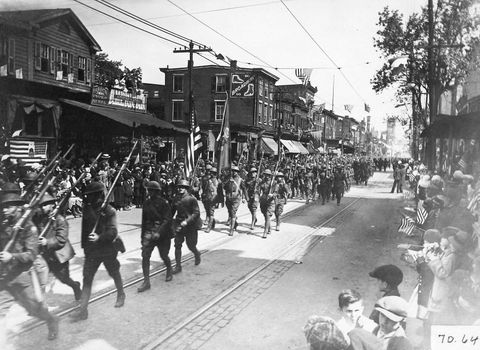
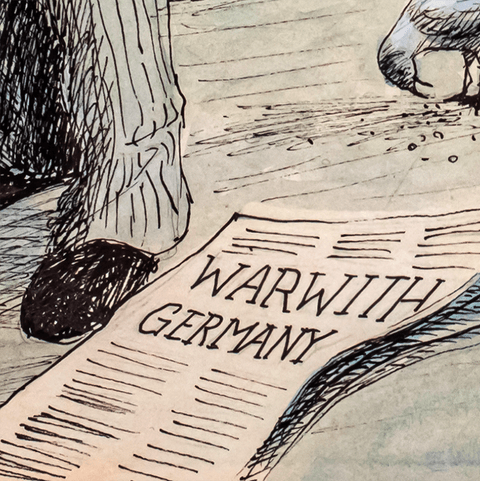
World War I
Camden’s major industries blossomed during World War I. Camden companies made ships, airplane parts, ammunition, and all types of machinery. The J.B. Van Sciver Company, famous as a furniture manufacturer, turned to supplying sand, gravel, and concrete for the Emergency Fleet Corporation, the federal government entity that operated merchant ships. The Victor Talking Machine Company was reorganized by the War Industries Board to produce aircraft and rifle parts along with other war materials. The New York Shipbuilding Company “raced to complete colliers, tankers, freighters, troopships, minelayers, destroyers and battleships.” The shipyard’s workforce was 4,500 in 1917, and by the end of the war in 1918 it had reached 17,500. The workforce included more than 40 different nationalities, which changed Camden’s ethnic character. Camden men also fought in Europe throughout the war, and ninety-six died in WWI.
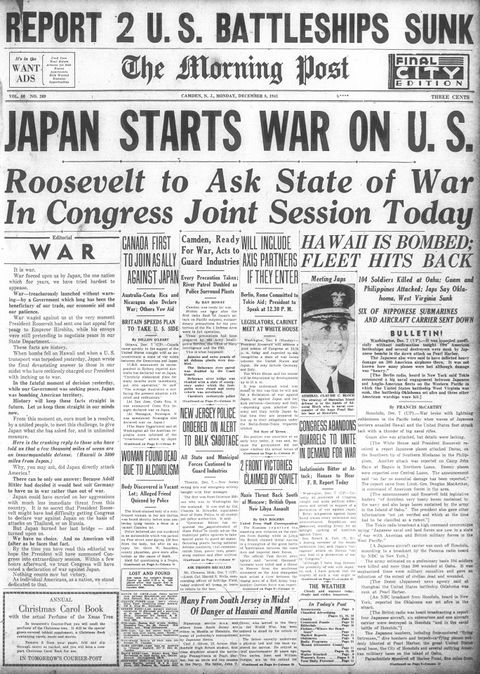

World War II
Camden men and women participated in World War II by volunteering overseas and working in war production industries at record speed. During World War II, New York Shipbuilding Company of South Camden was the largest and most productive shipyard on Earth. From December 1941 to August 1945, this shipyard completed 26 major ships for the Navy, including eight light cruisers, nine light aircraft carriers, two battle cruisers, and one battleship. Employment at the South Camden yard peaked at 33,000 workers, including 3,000 female welders. New workers including women, Caribbean blacks, and Hispanics flooded into Camden to fill jobs in various manufacturing plants. African Americans from southern states formed the single largest group of newcomers during the war. Other Camden companies also received contracts for war productions. Many Camden men and women served in Europe and in the Pacific. According to government records, 608 men and women from Camden County died in World War II.

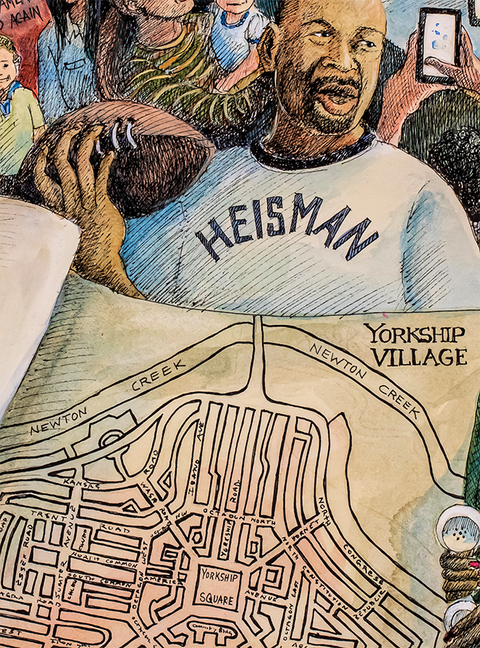
Yorkship Village/Fairview Historic District
During WWI, The Emergency Fleet Corporation collaborated with the New York Shipbuilding Company and Pusey and Jones Shipbuilding Company to build housing for the thousands of shipyard workers in South Camden and Gloucester City, NJ. The government and New York Shipbuilding purchased 140 acres and hired noted New York architect Electus D. Litchfield to design Yorkship Village, a planned community in South Camden. Employing the British “garden city” concept intended to relieve overcrowded industrial cities, Litchfield laid out a village organized around a central square. Commercial shops and over 1,000 brick and stucco homes, including row, detached, duplex and apartment units, were organized in concentric circles around the central square. In 1918, the tract was annexed to the City of Camden. “We did not expect to create a New Utopia,” Litchfield explained, “but we did have to produce a community for the development of a true American citizenship.”
